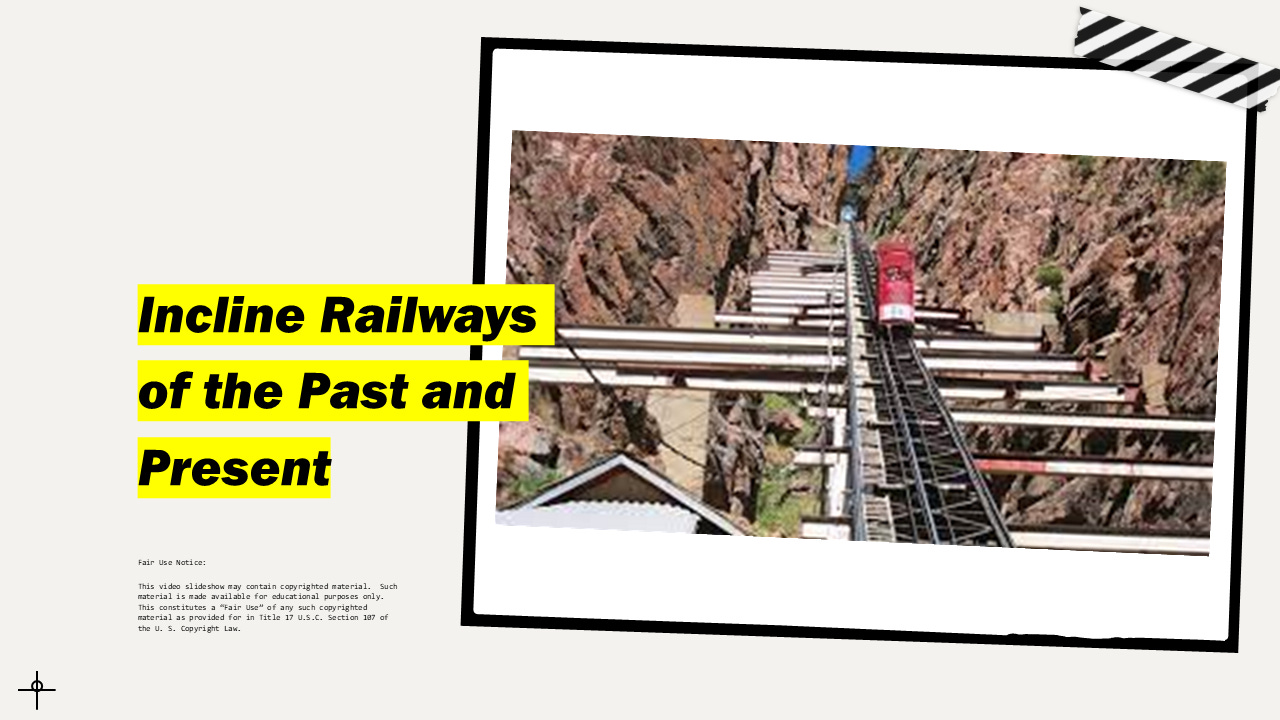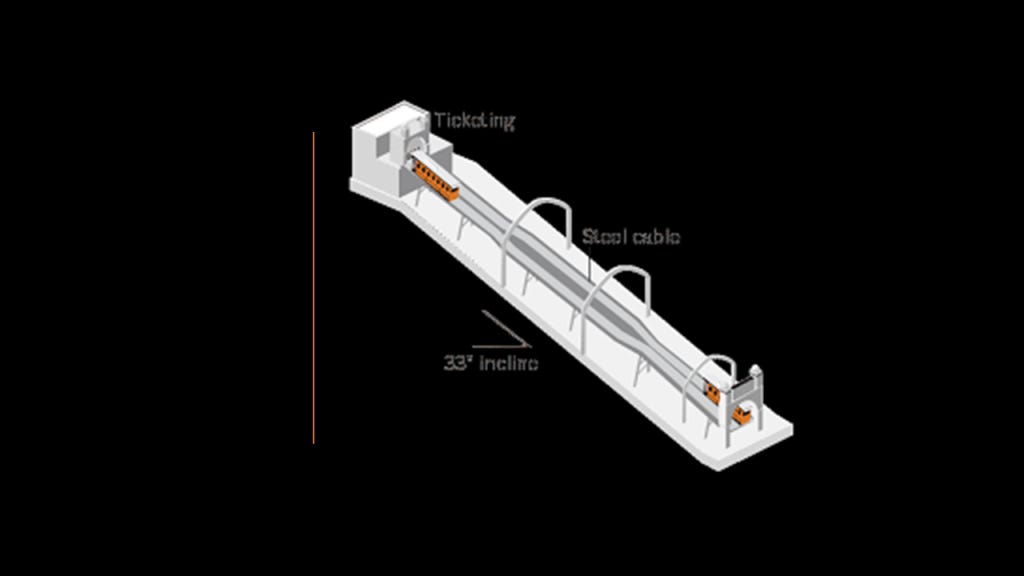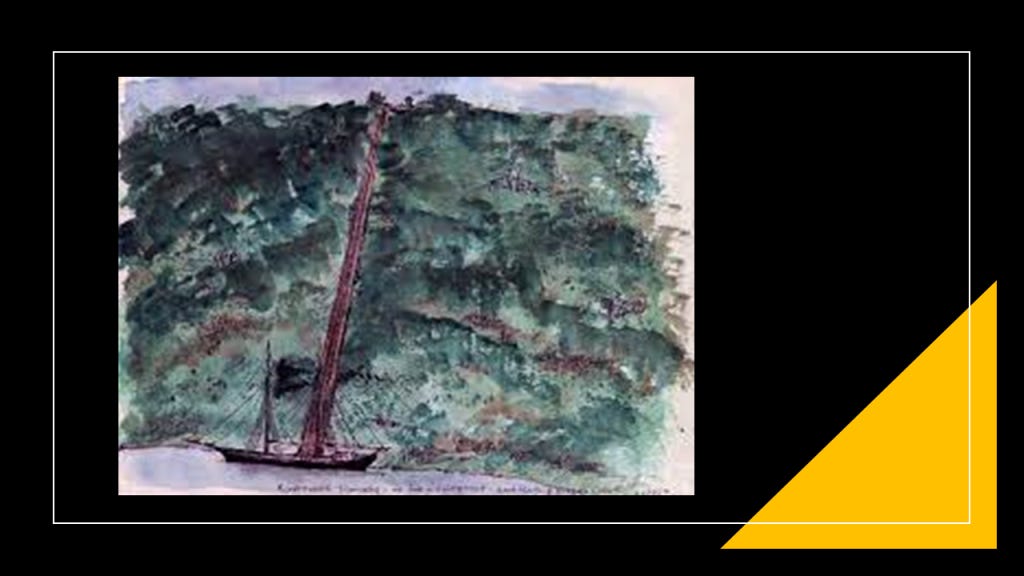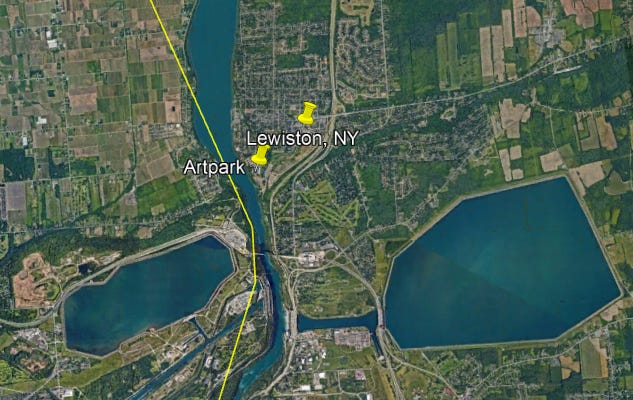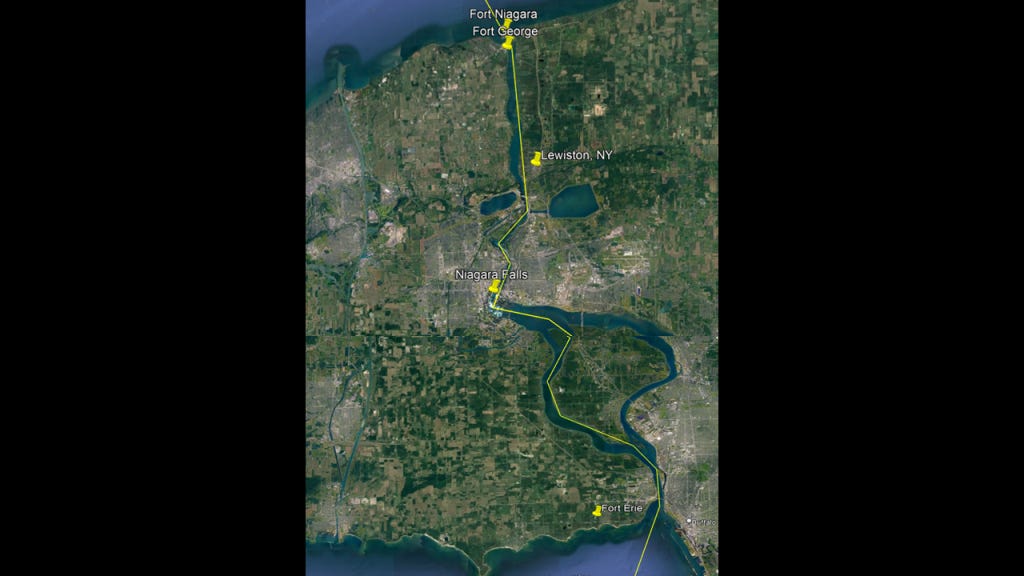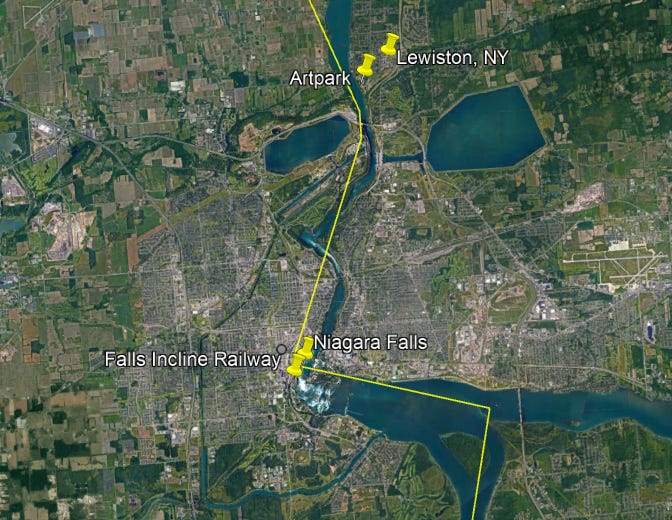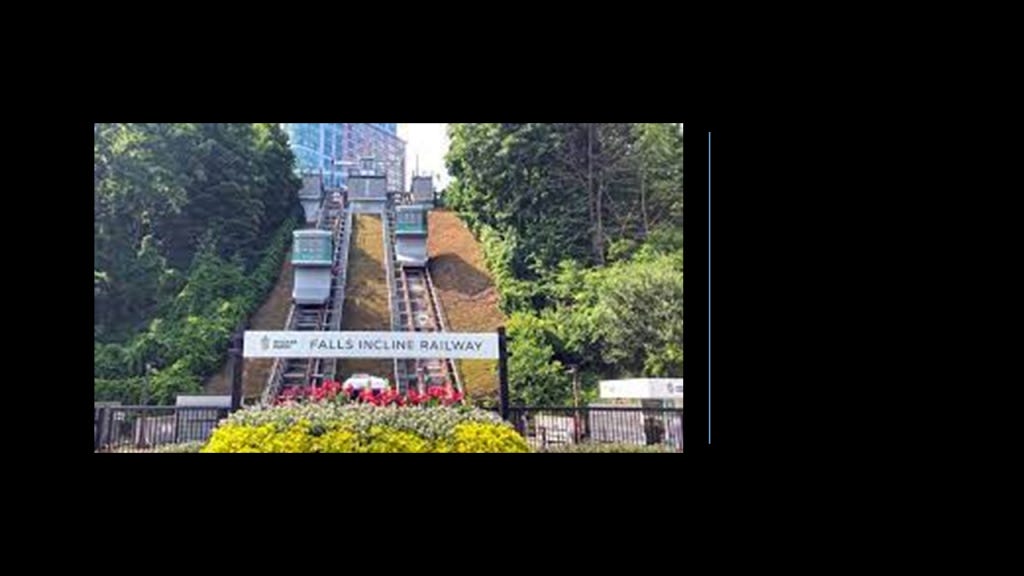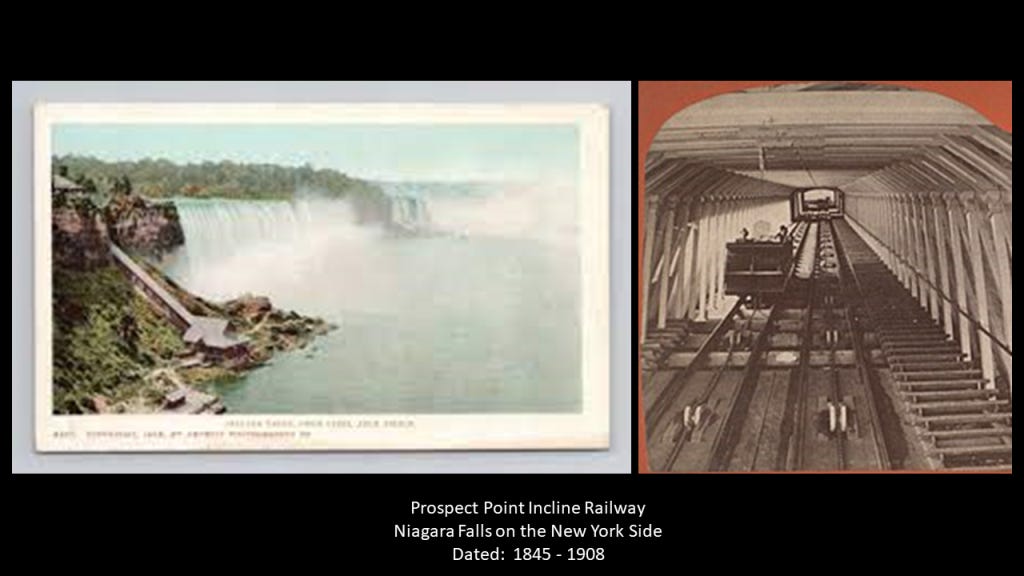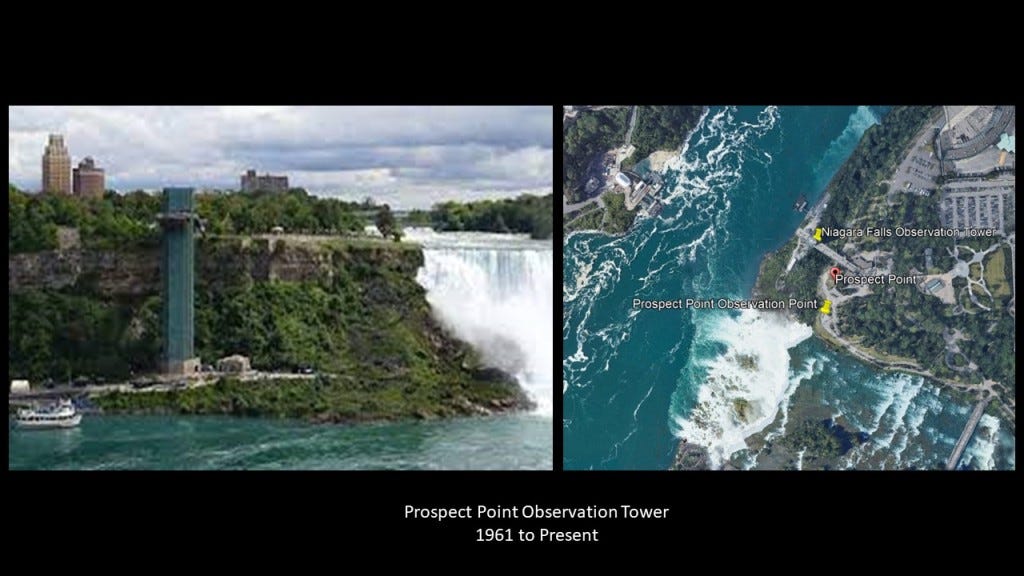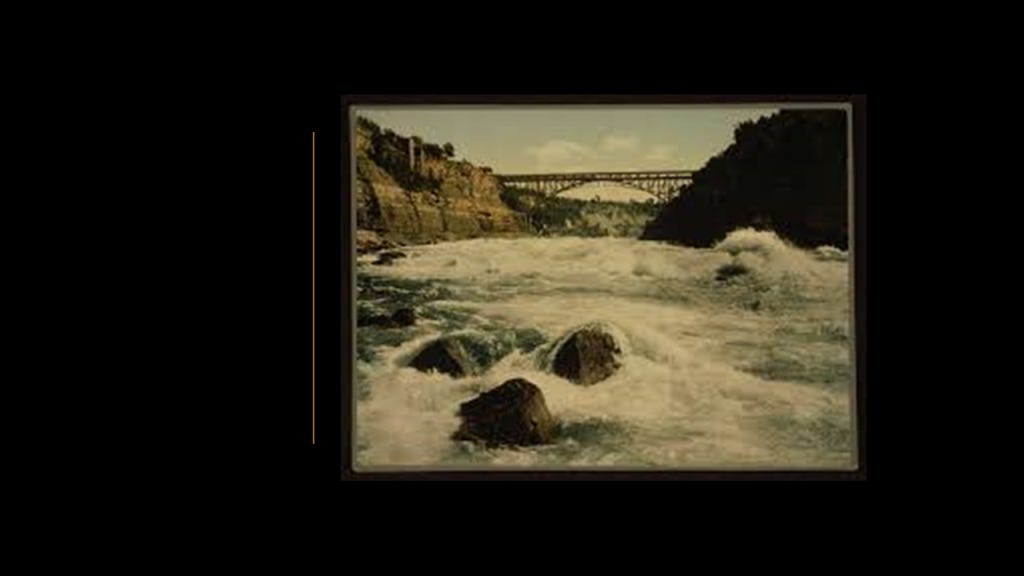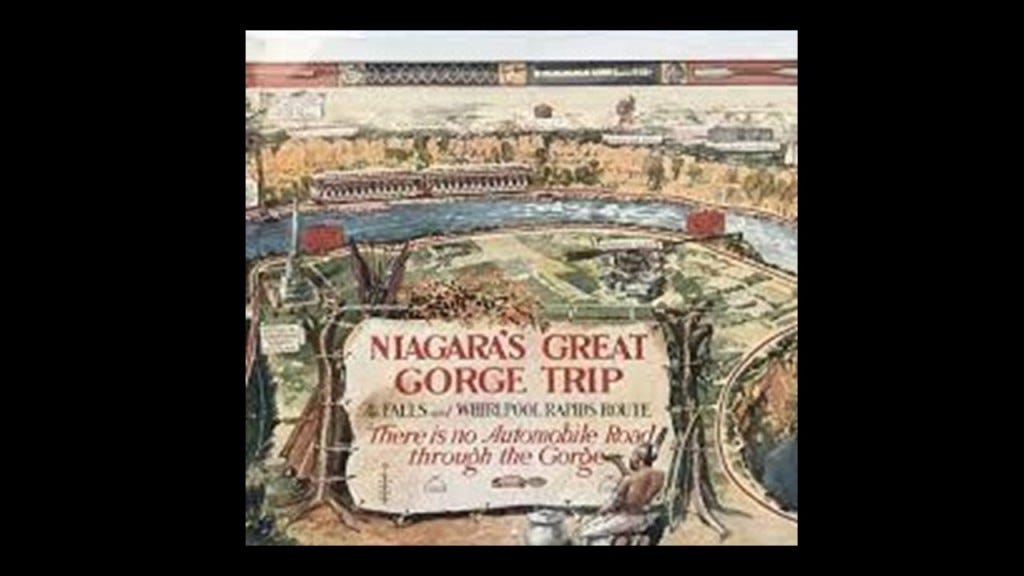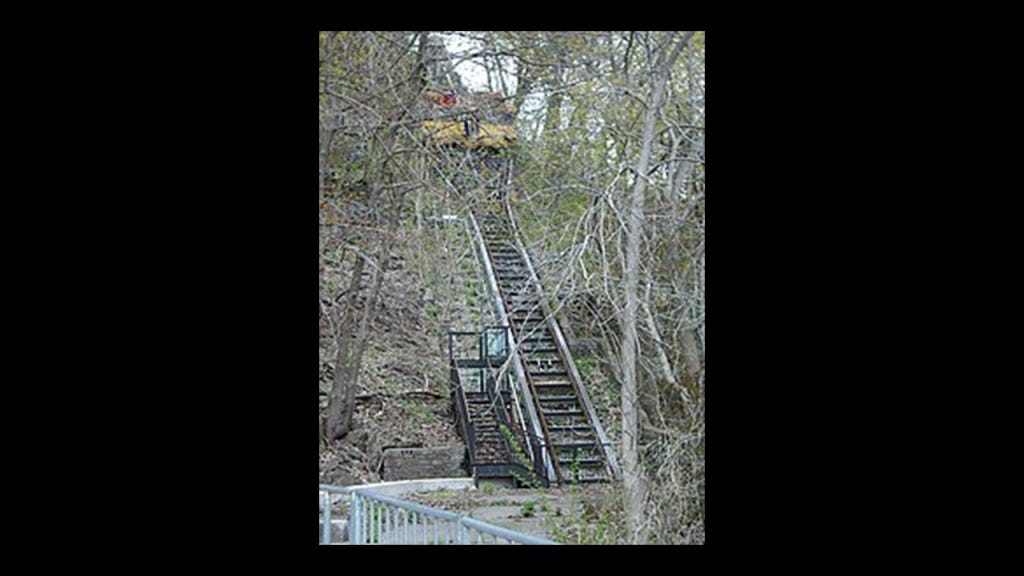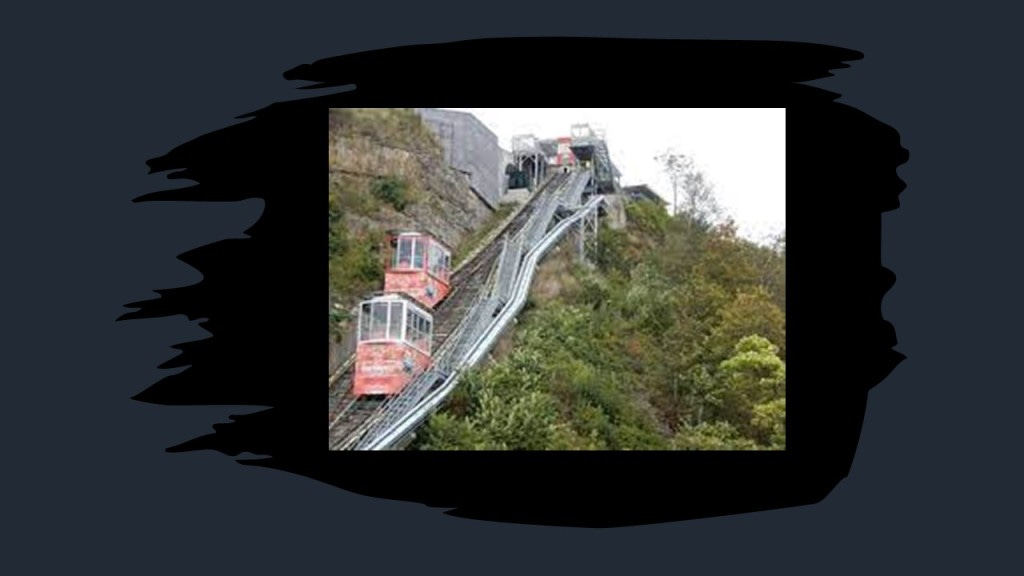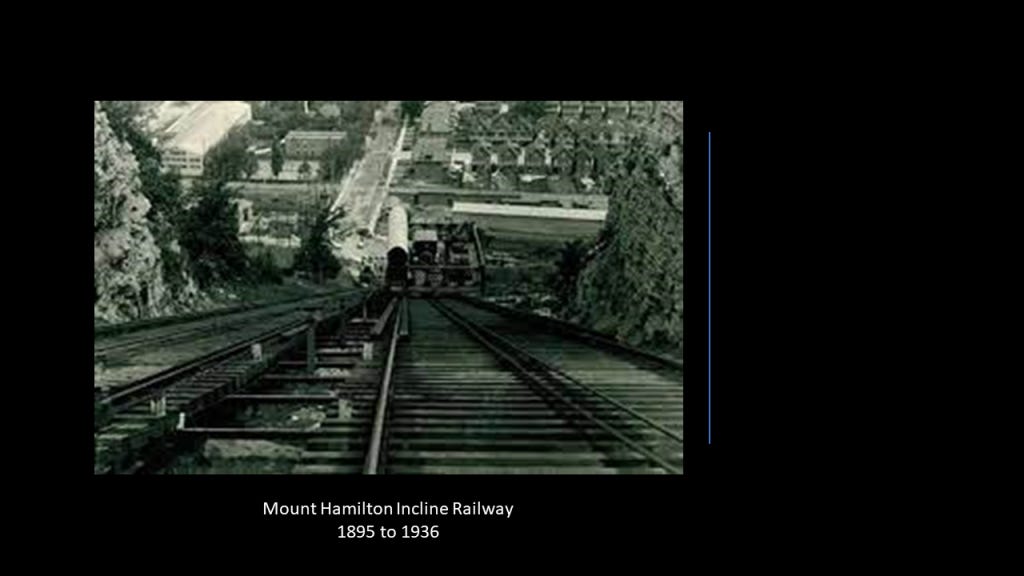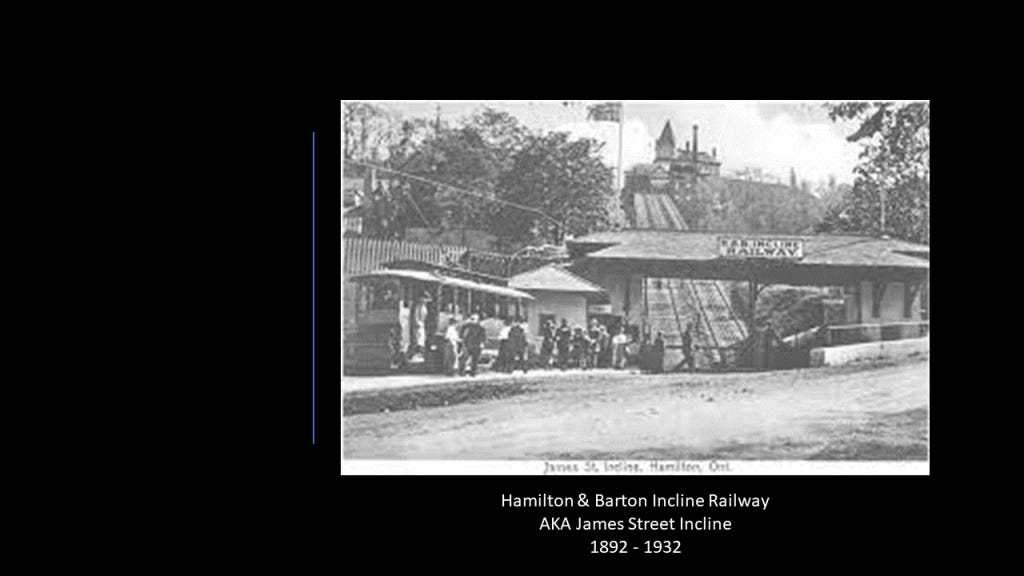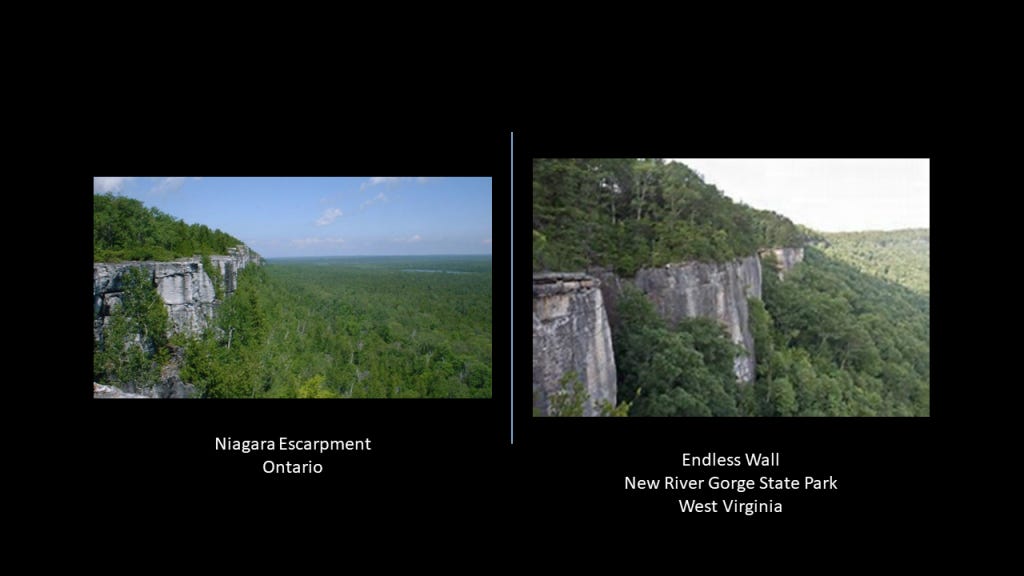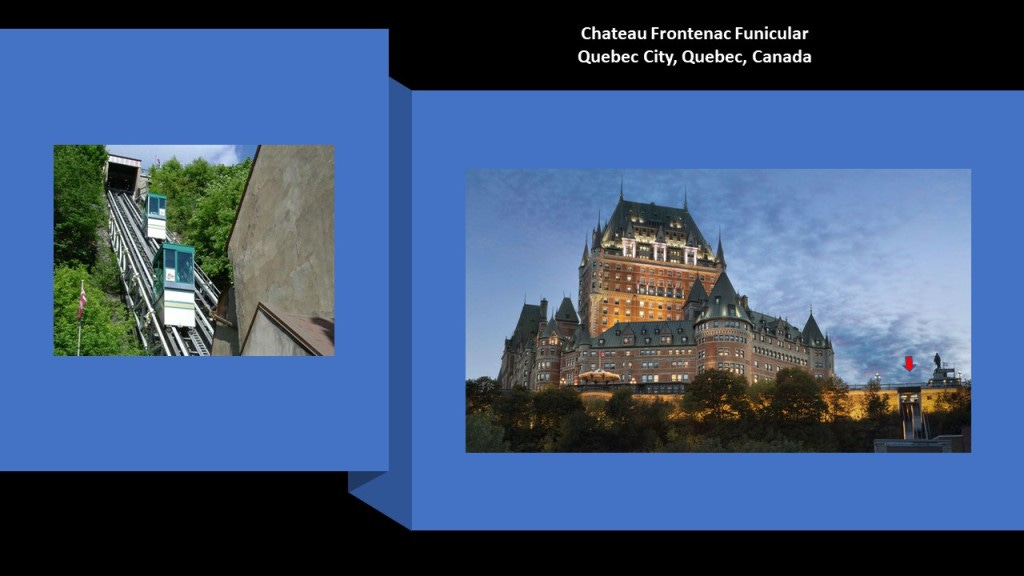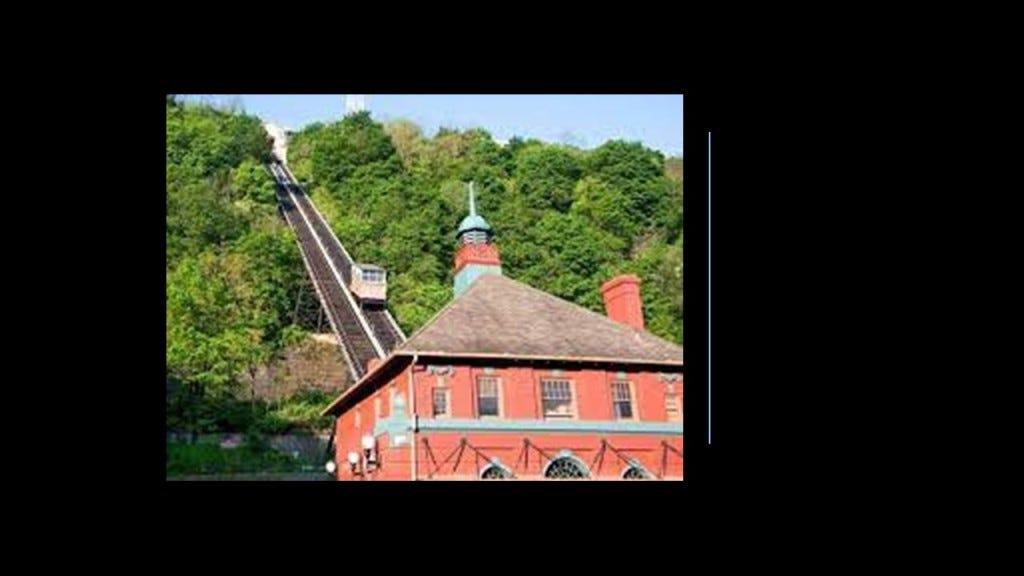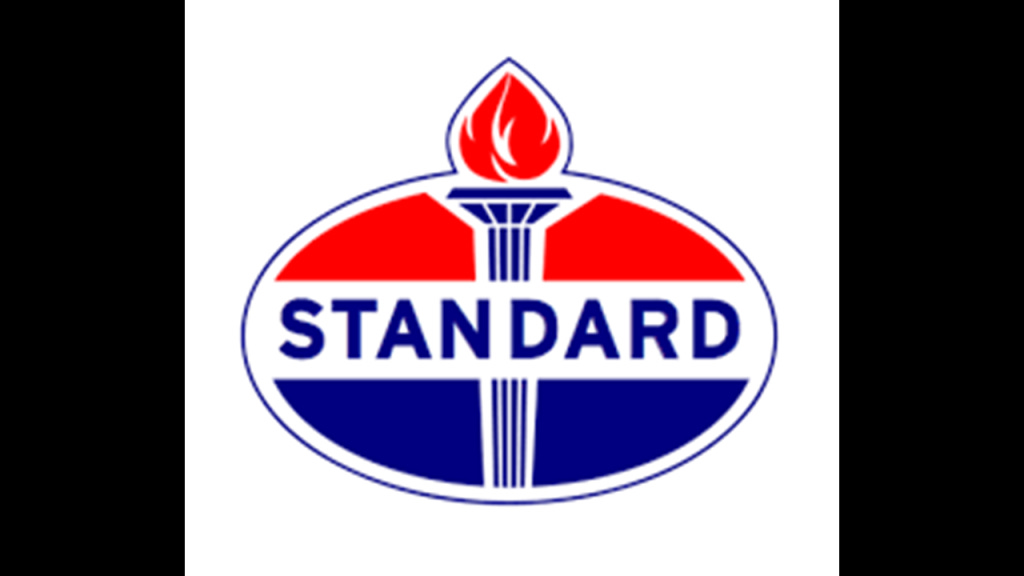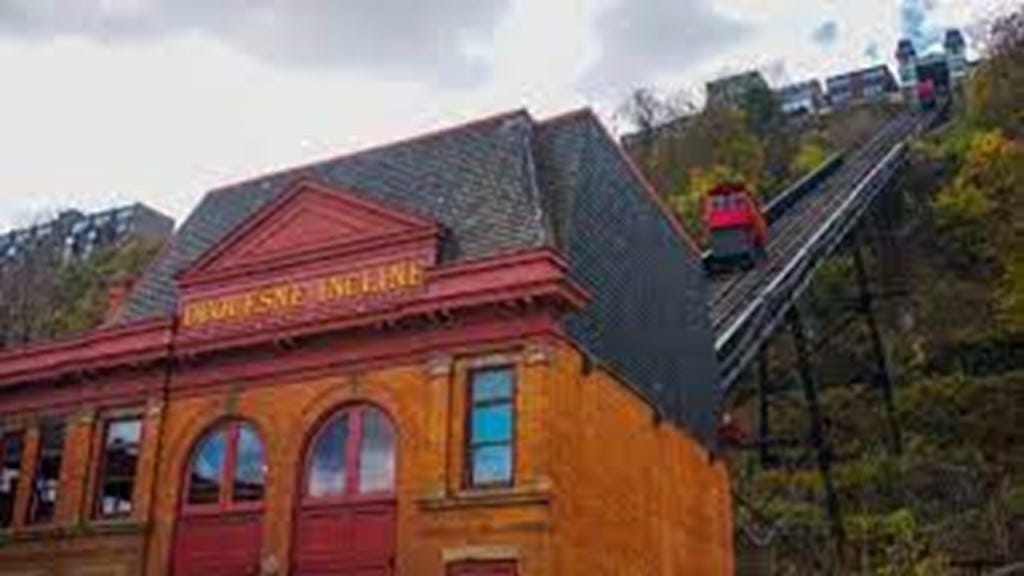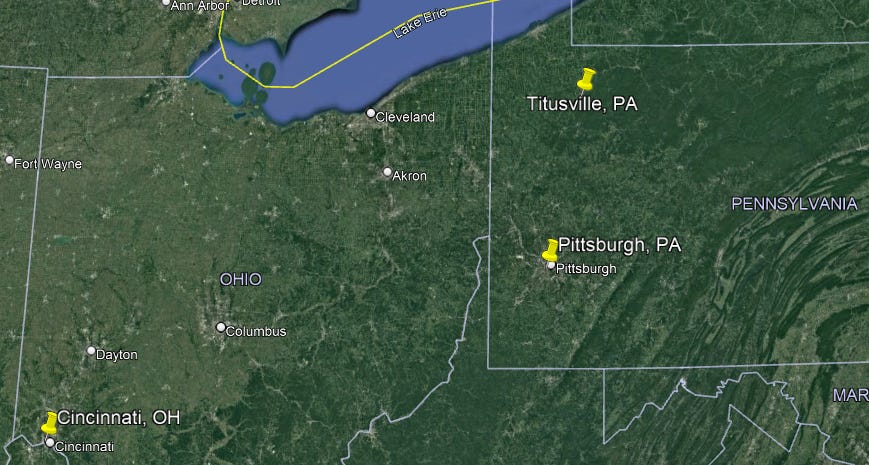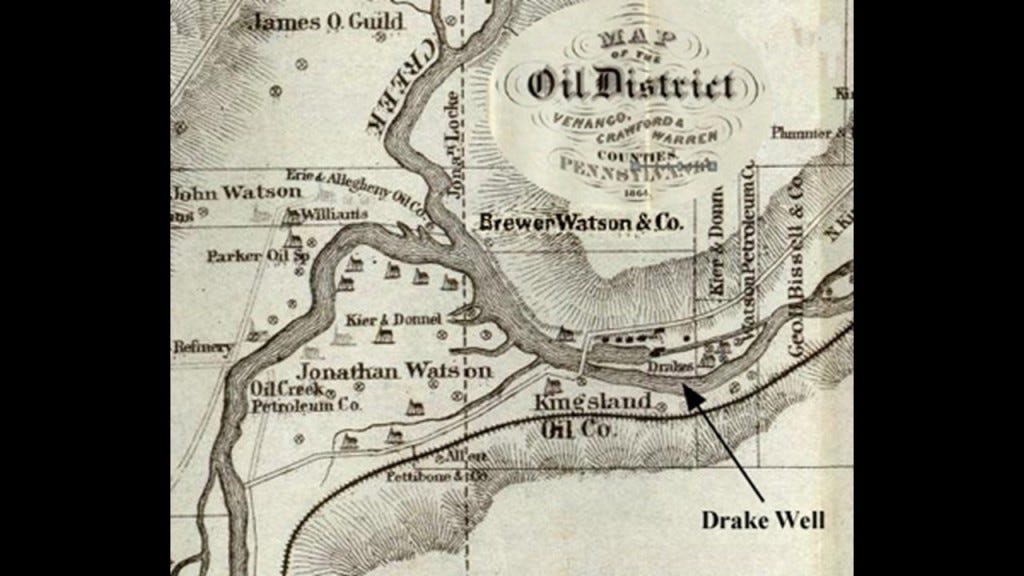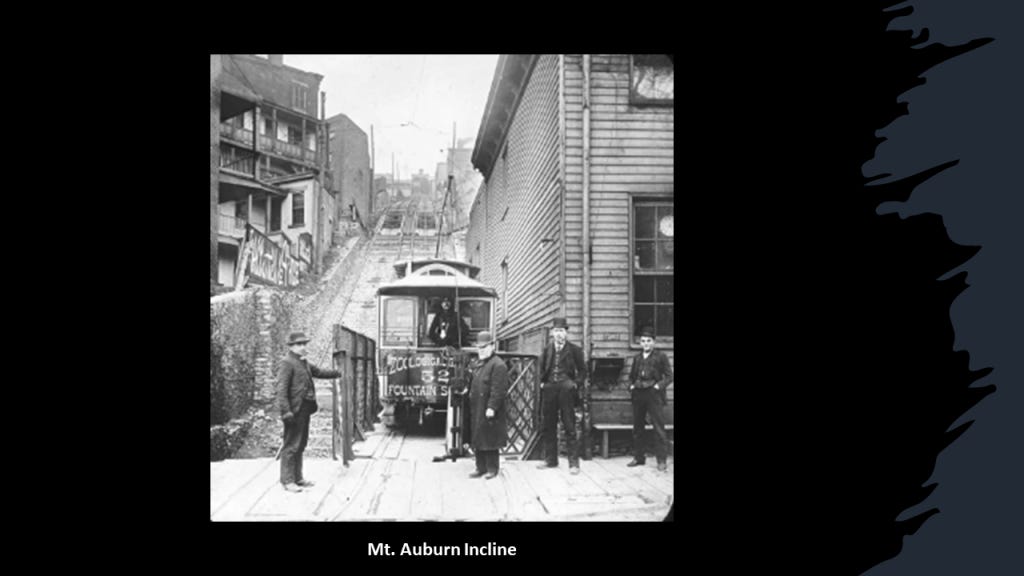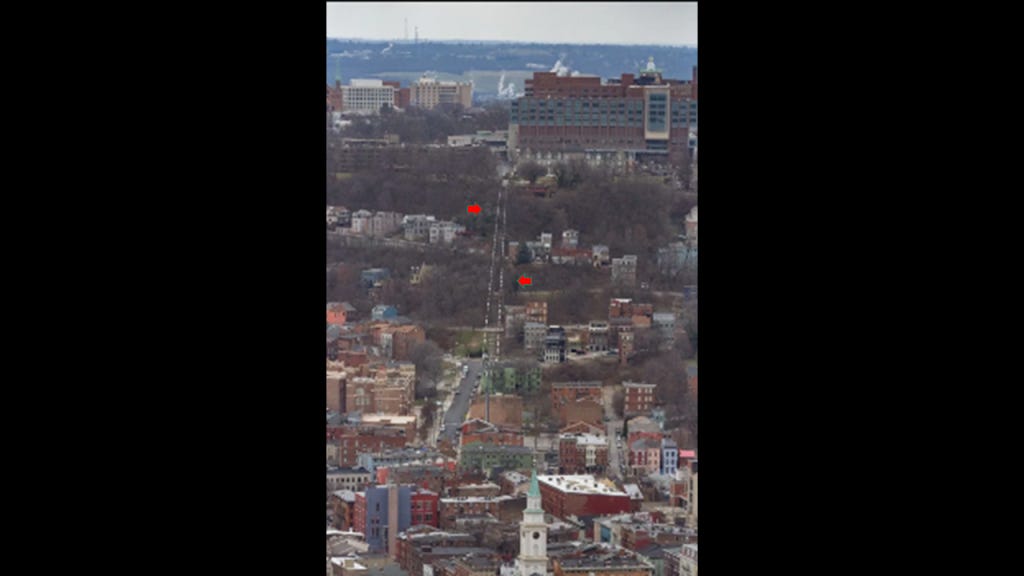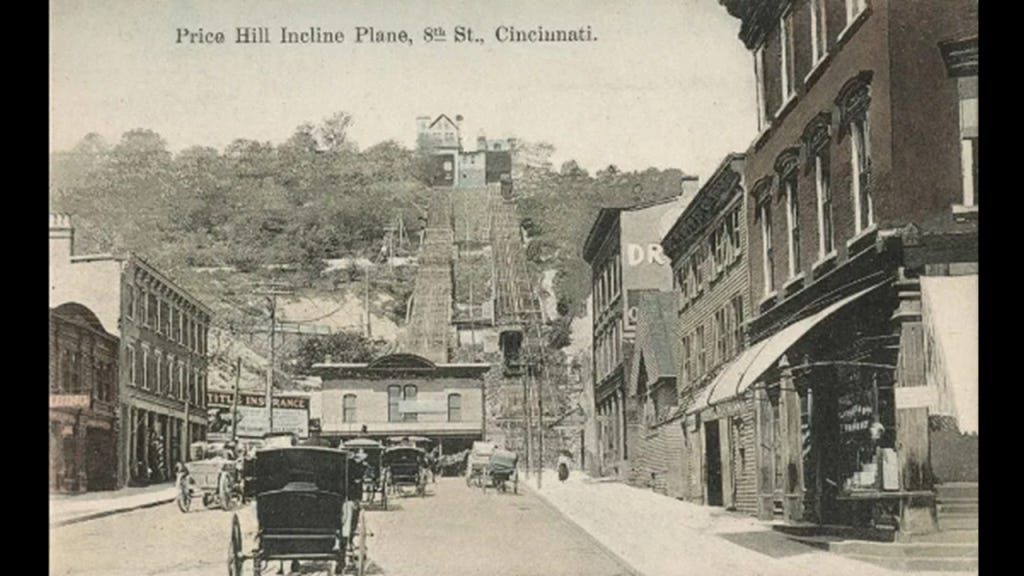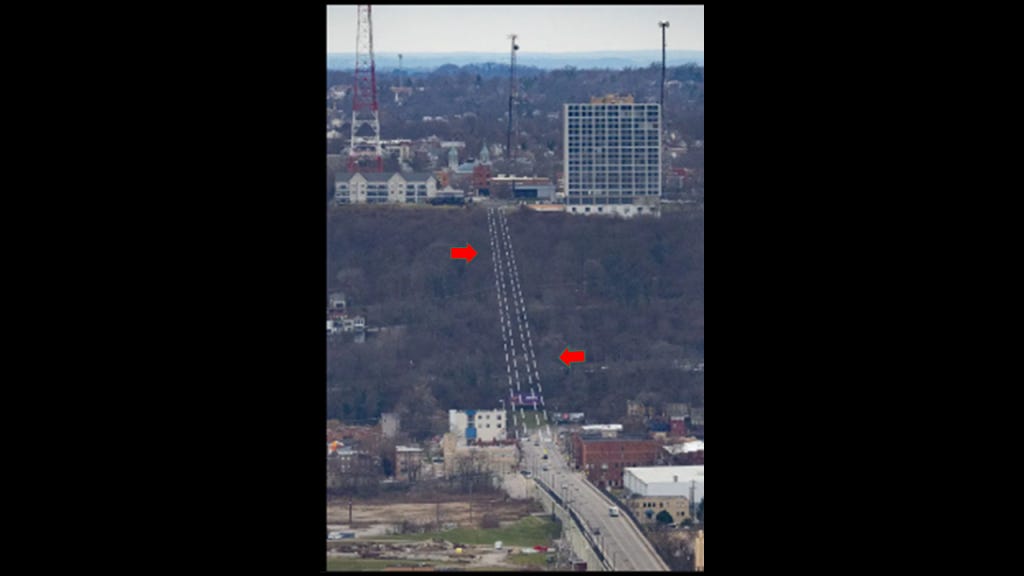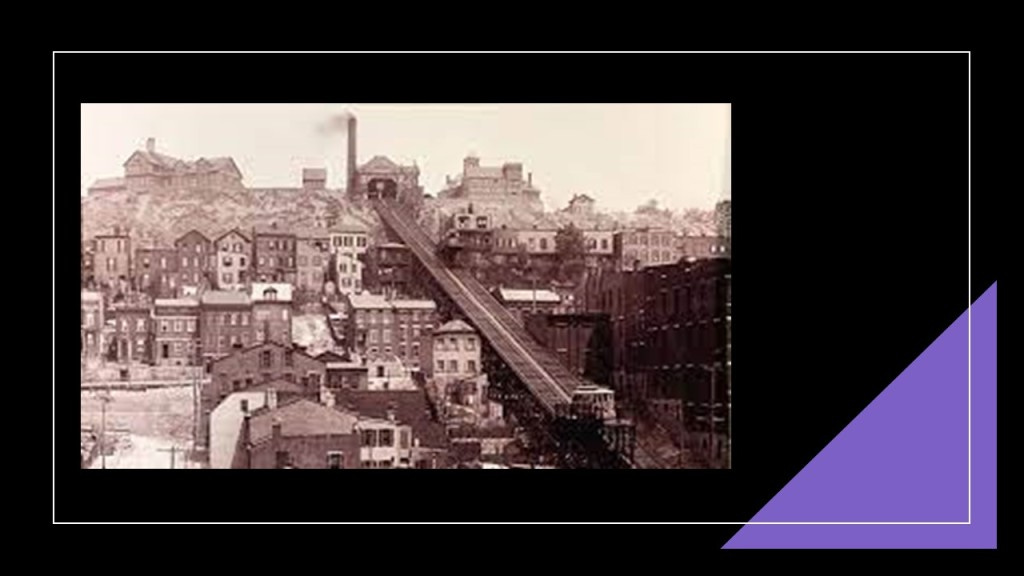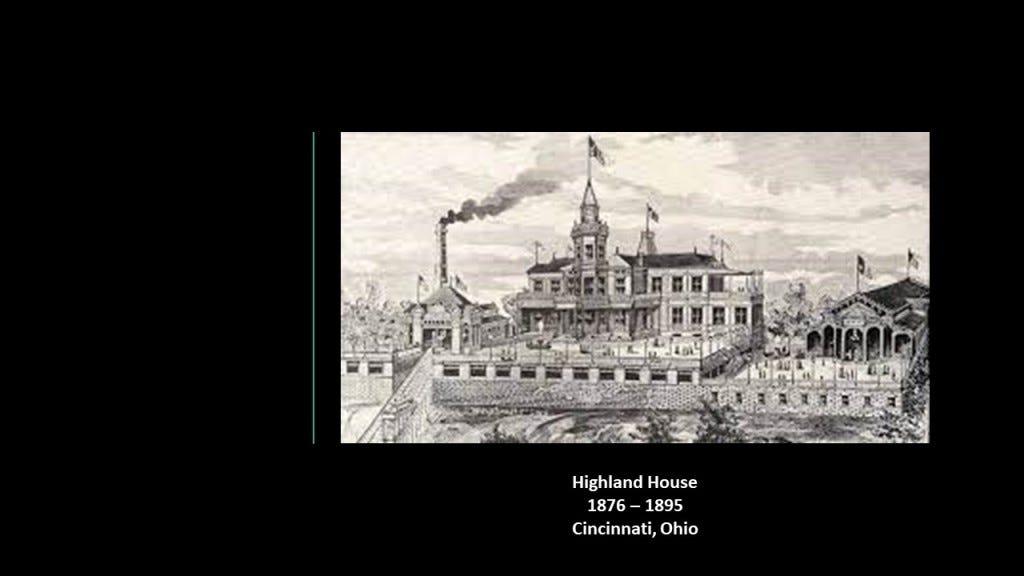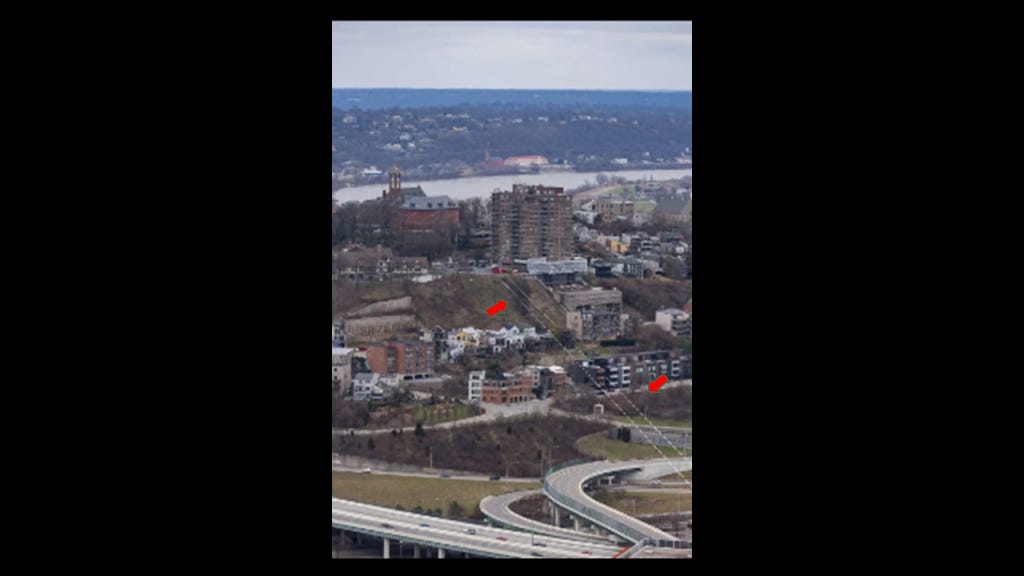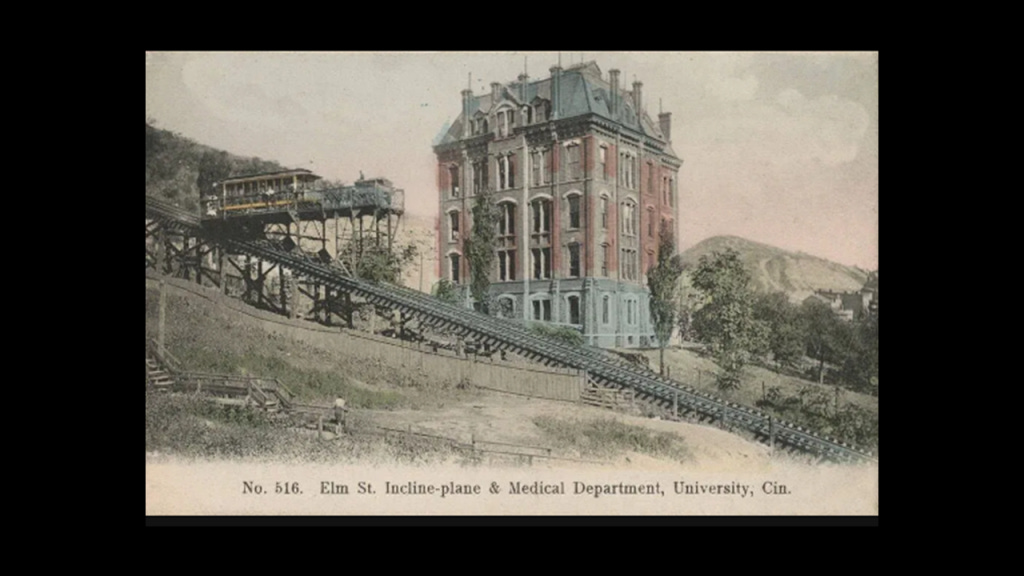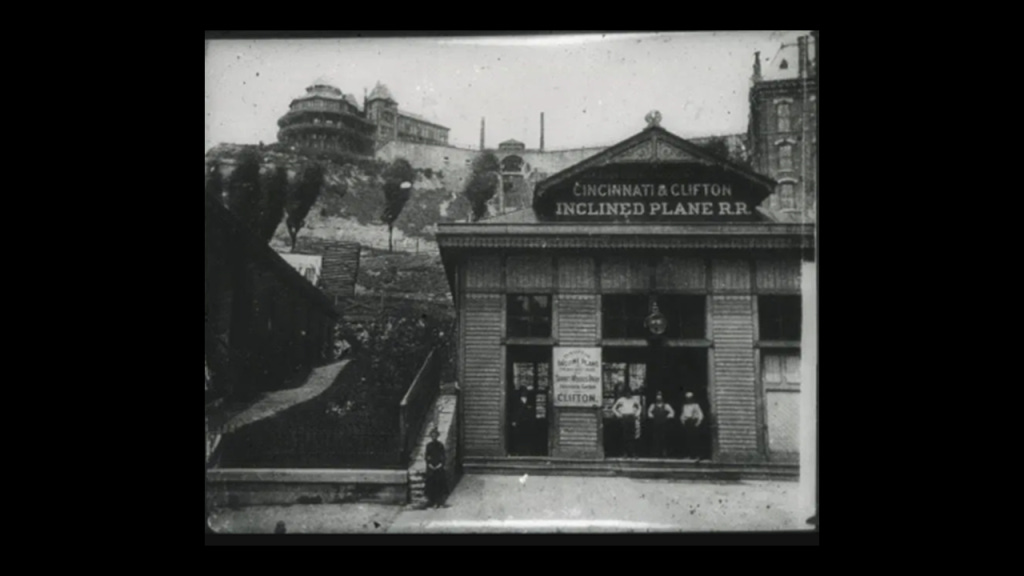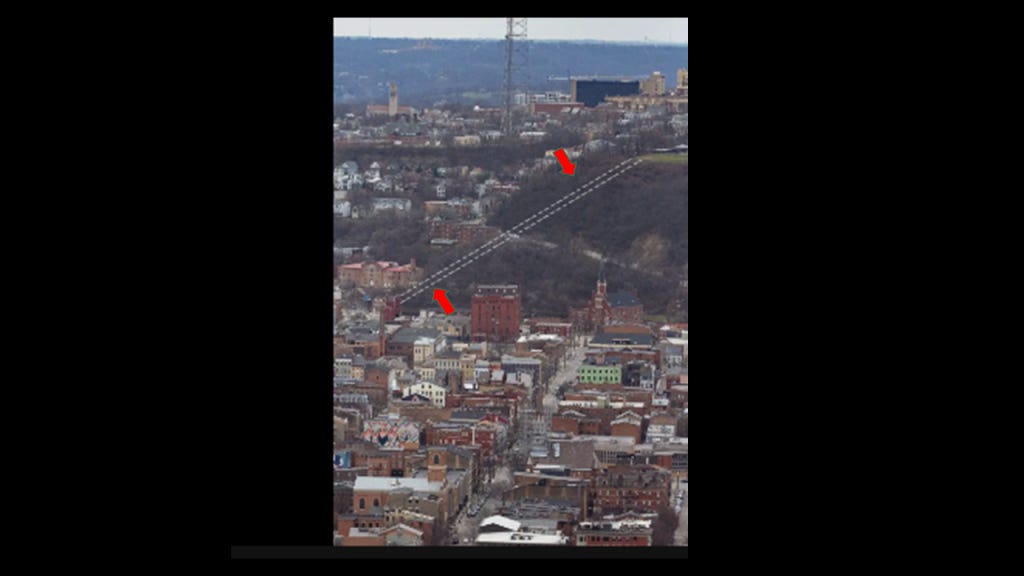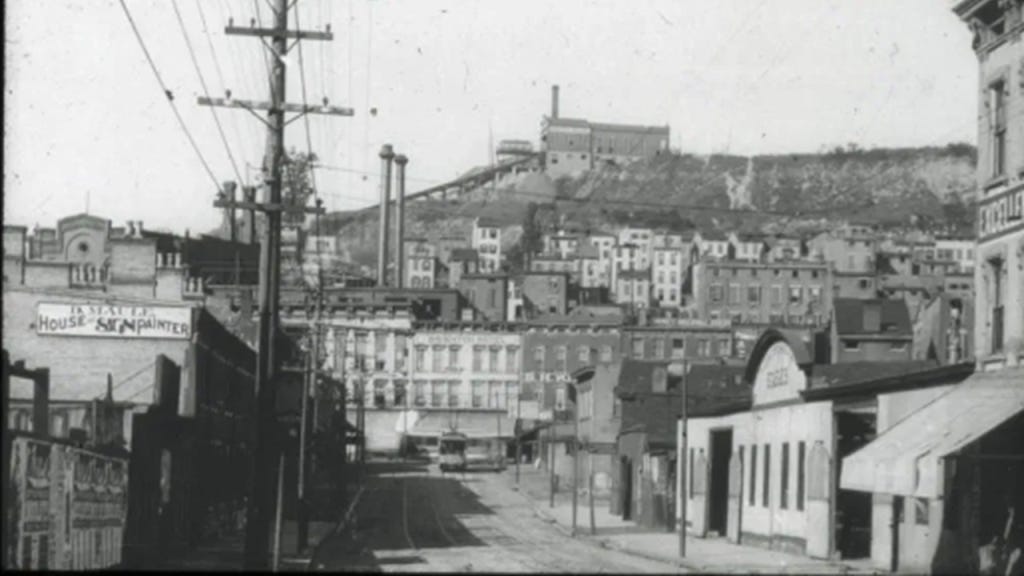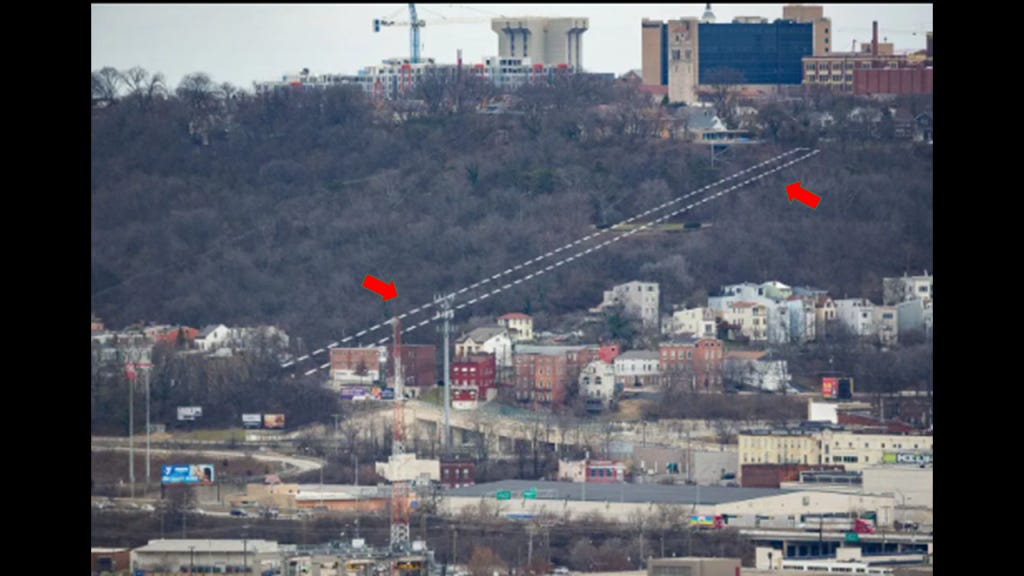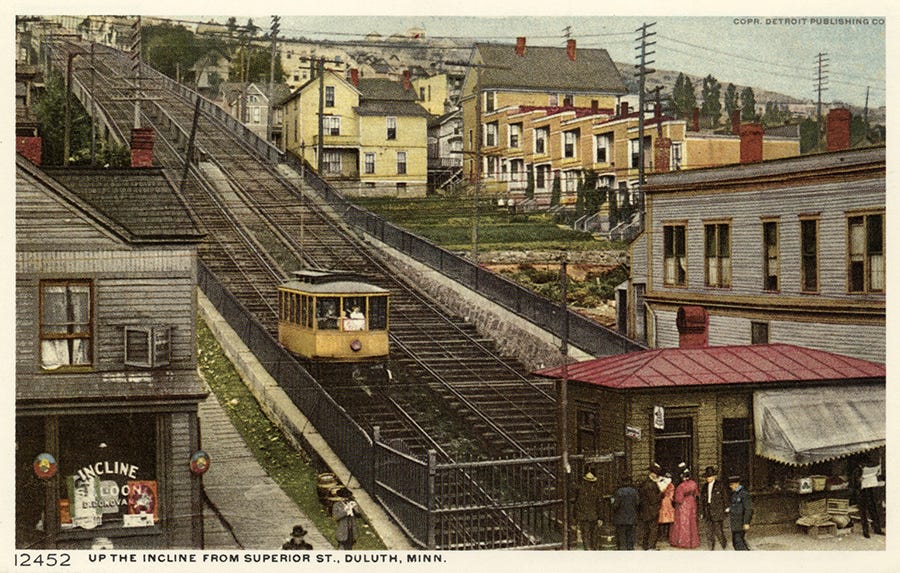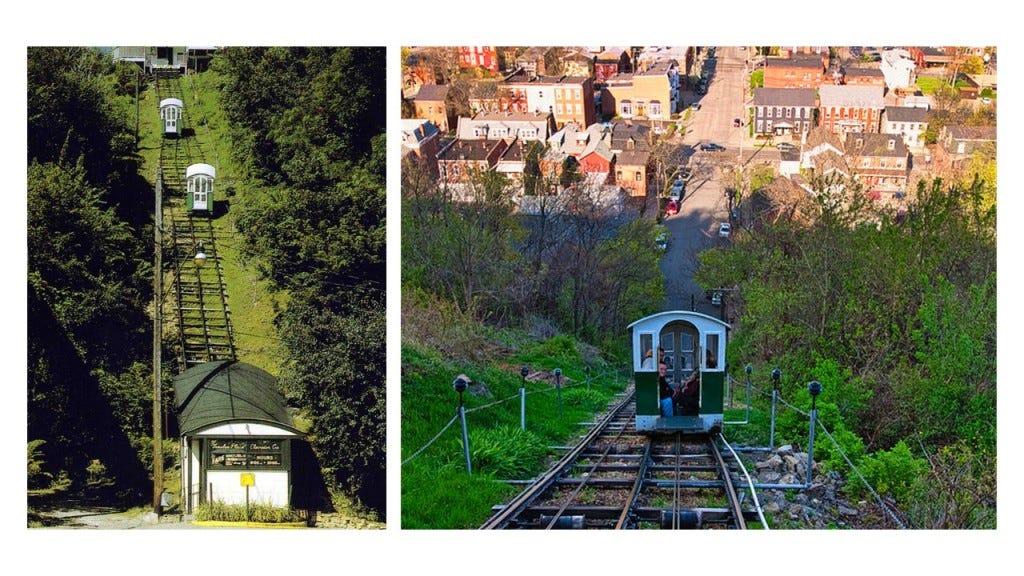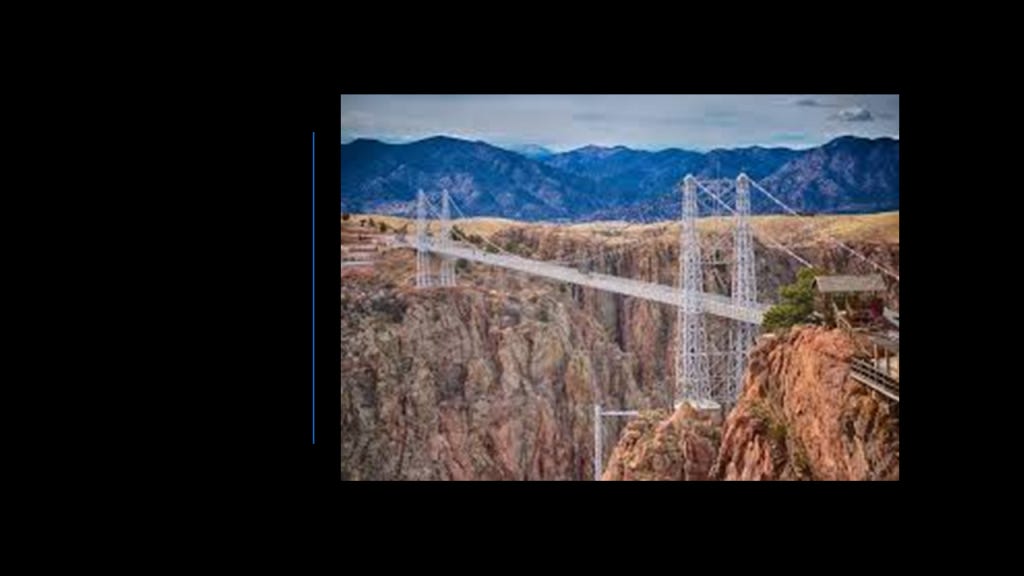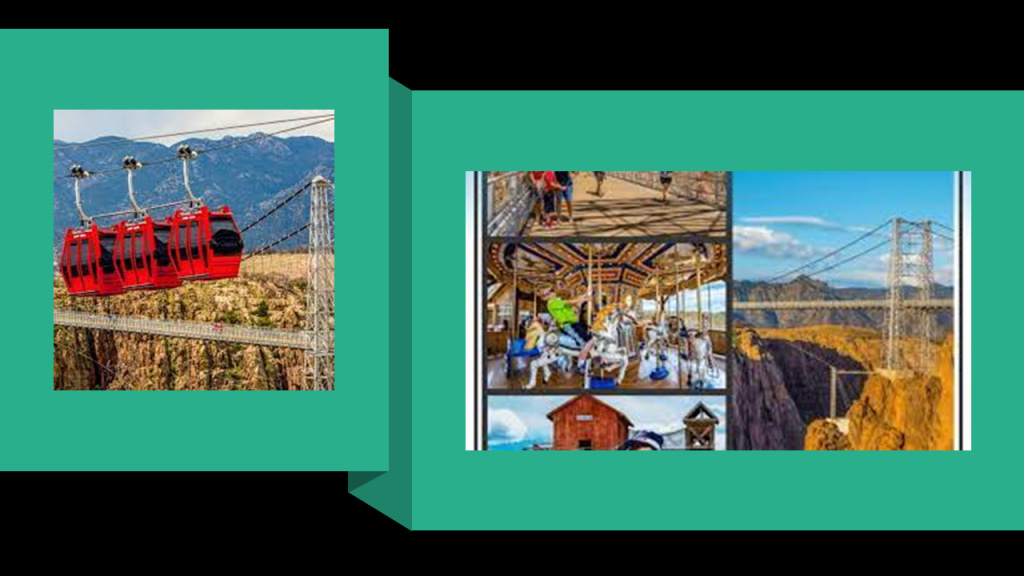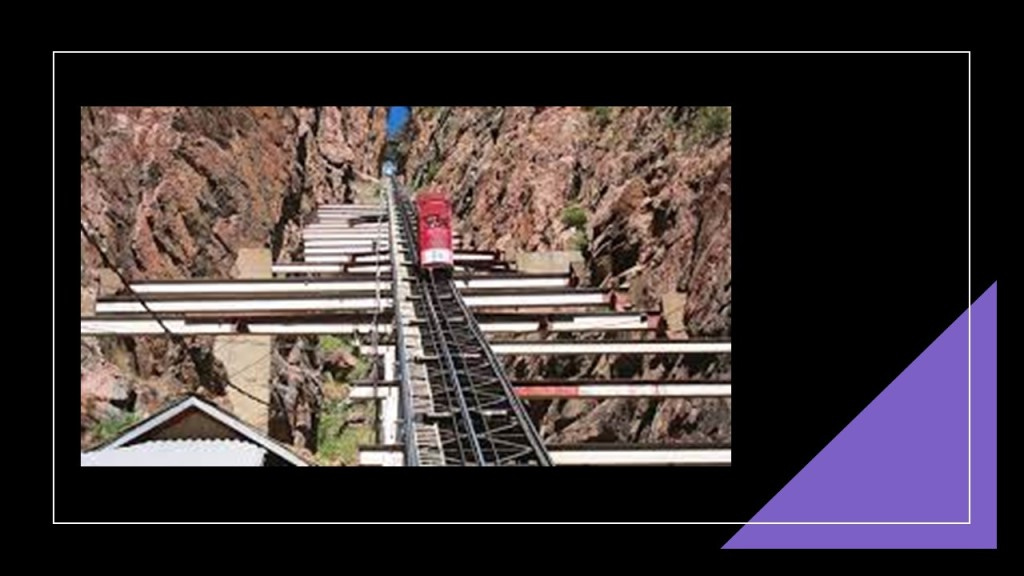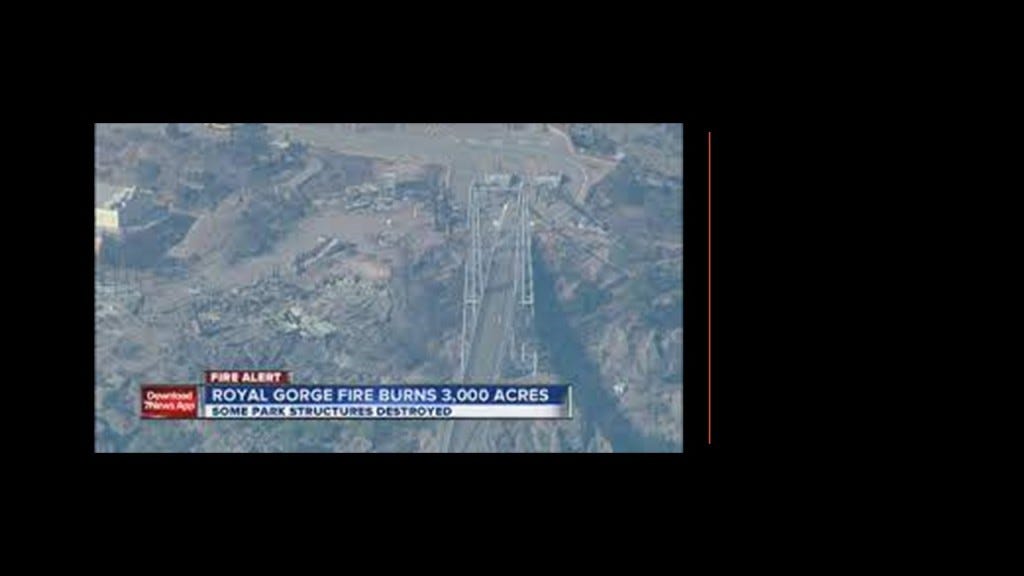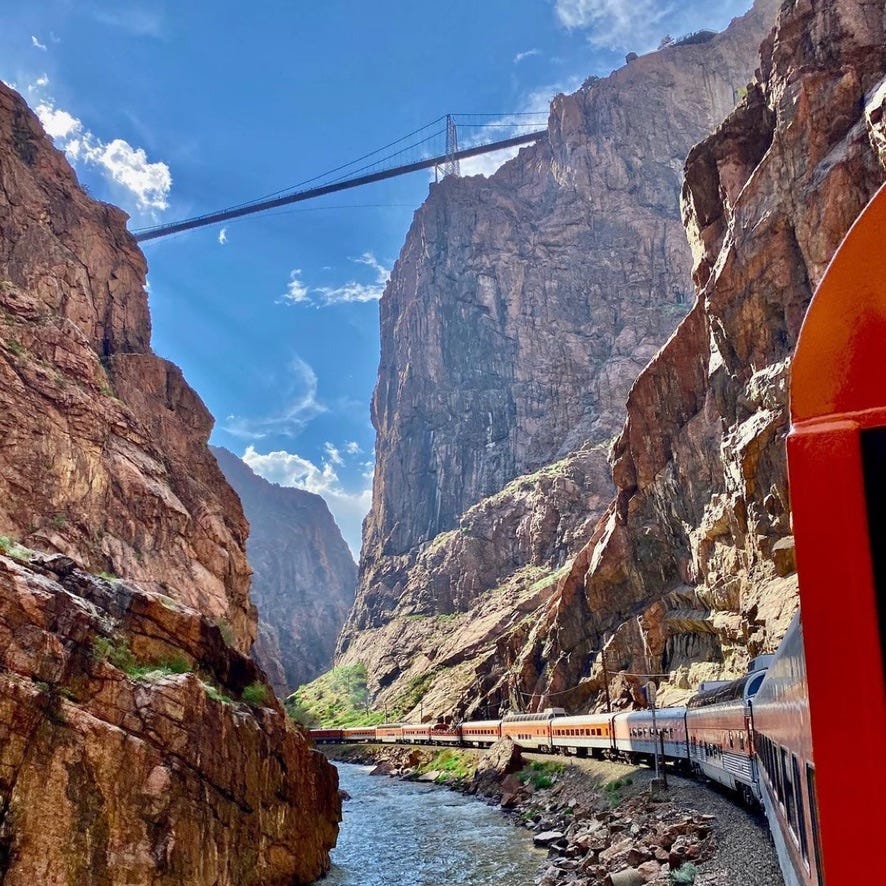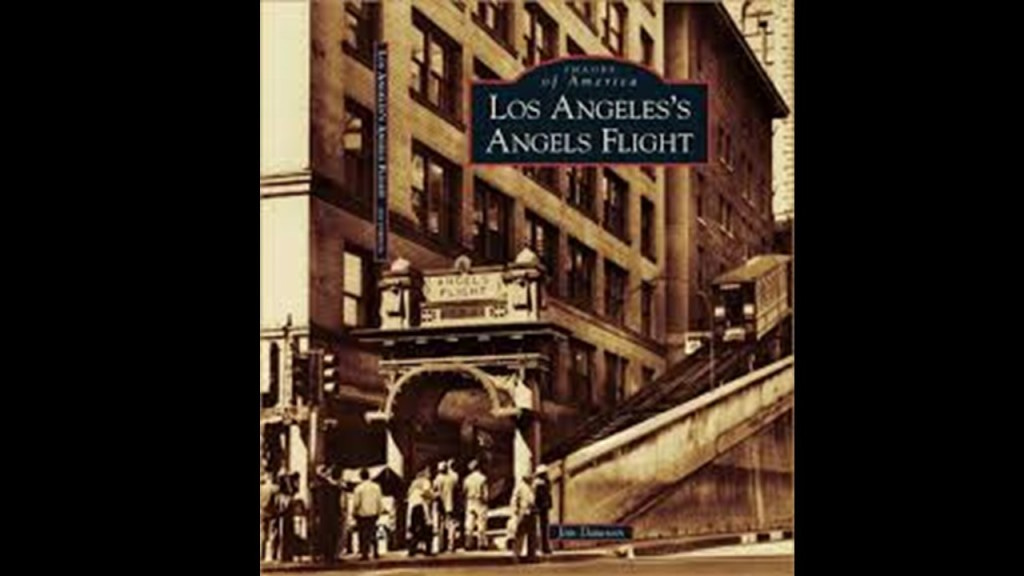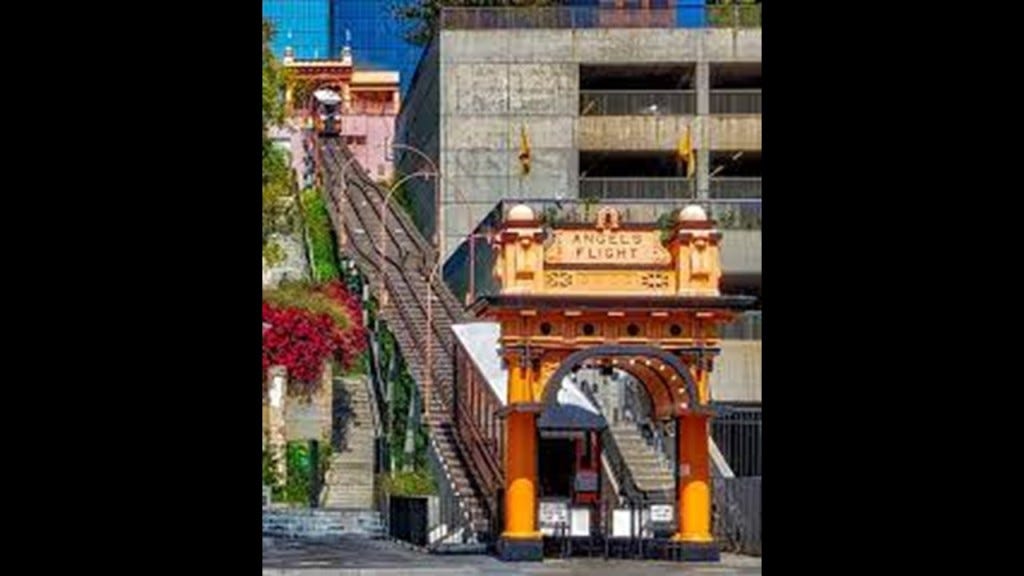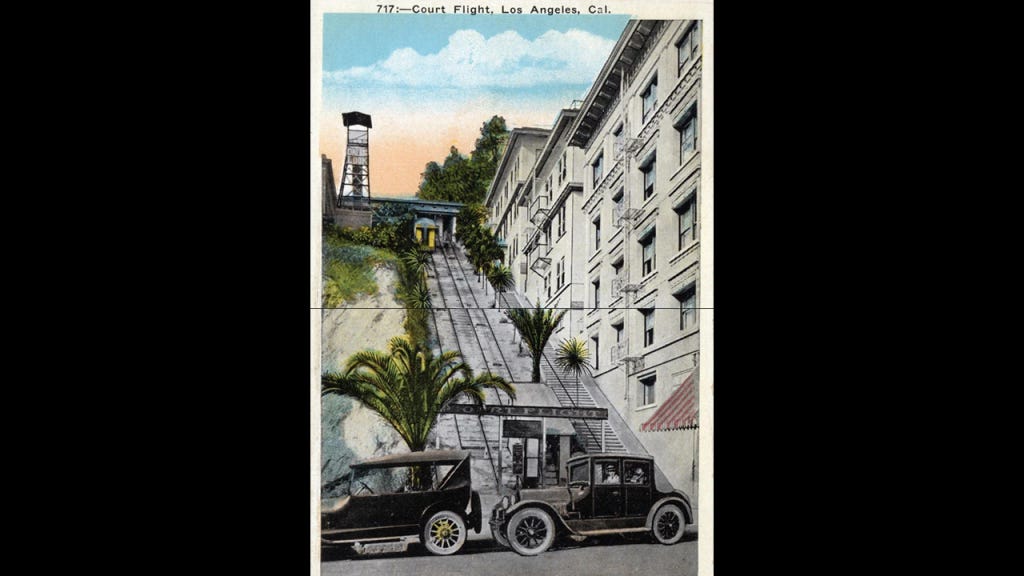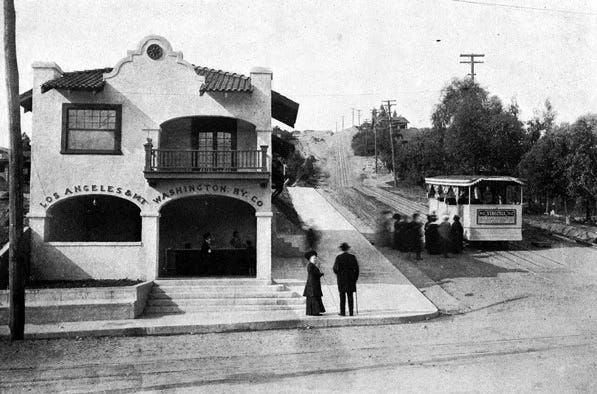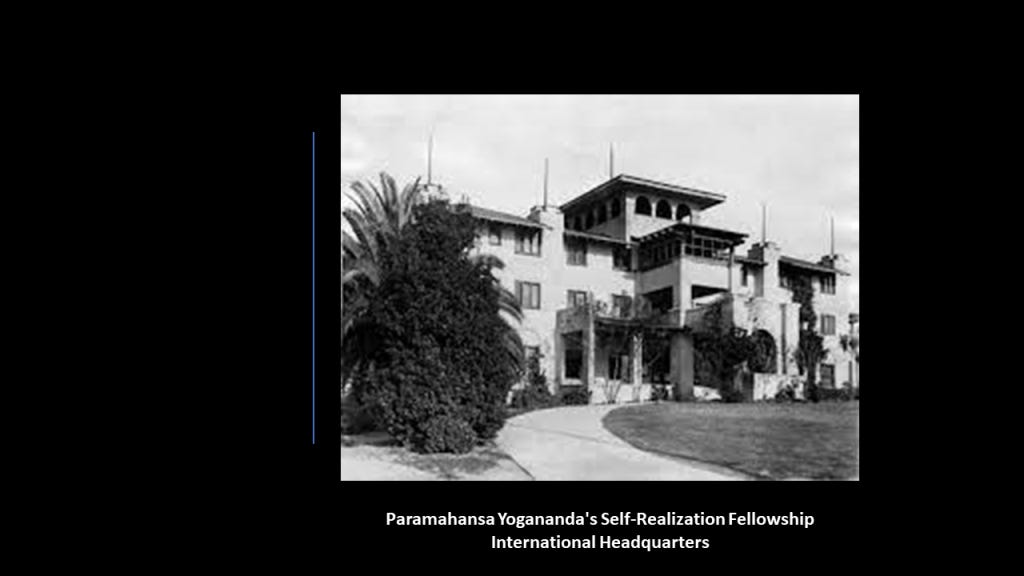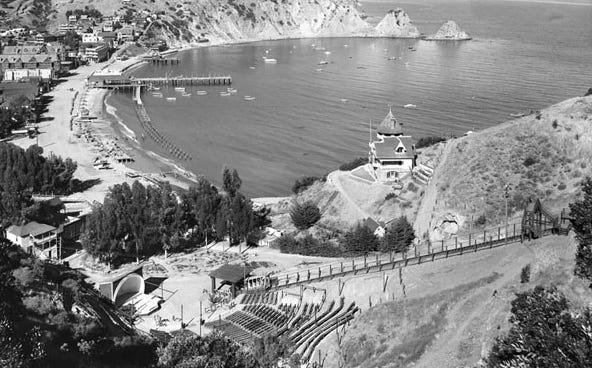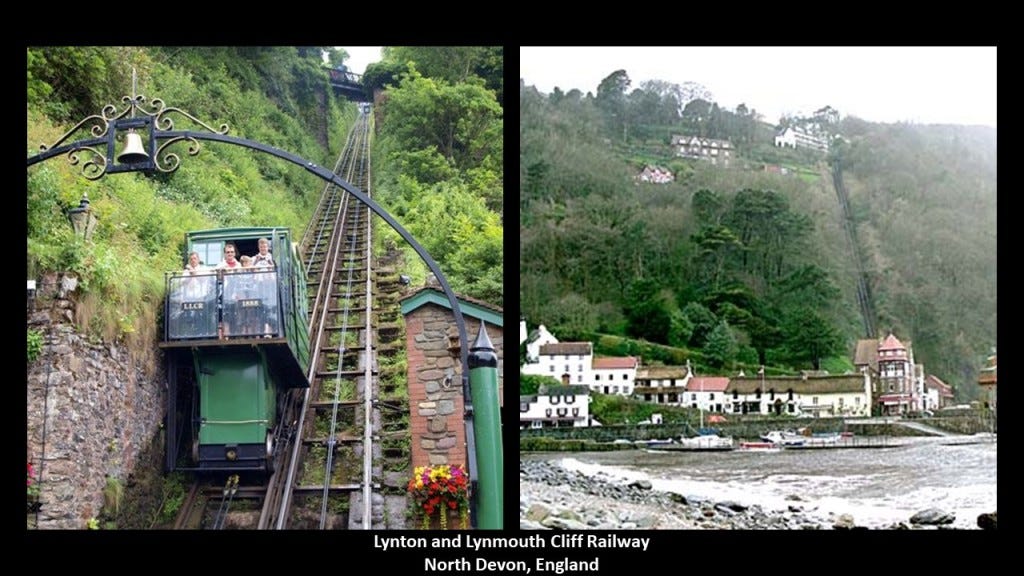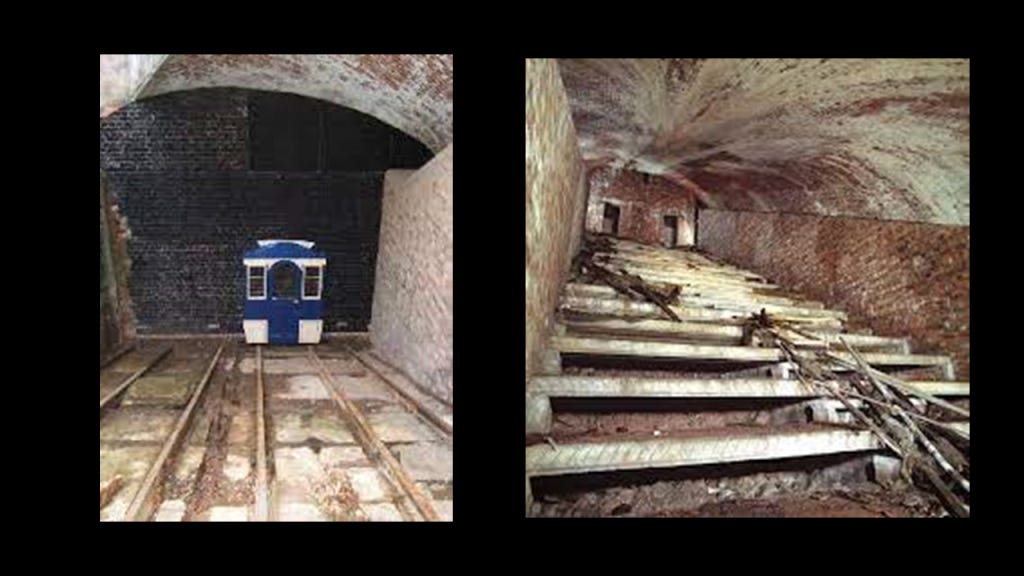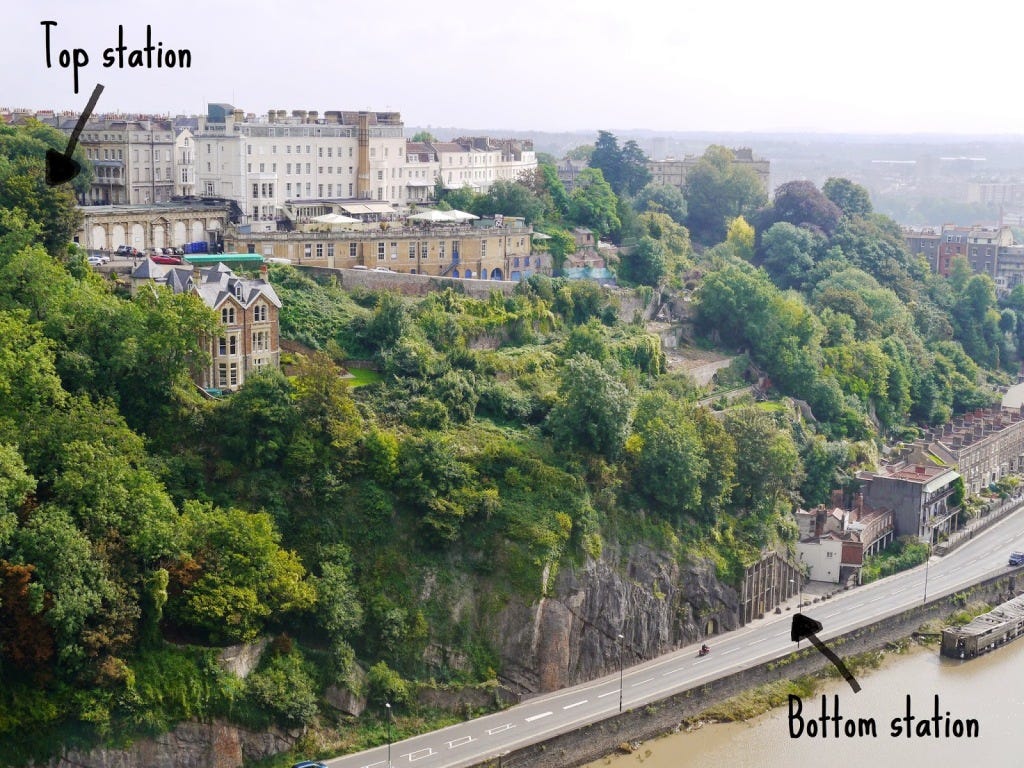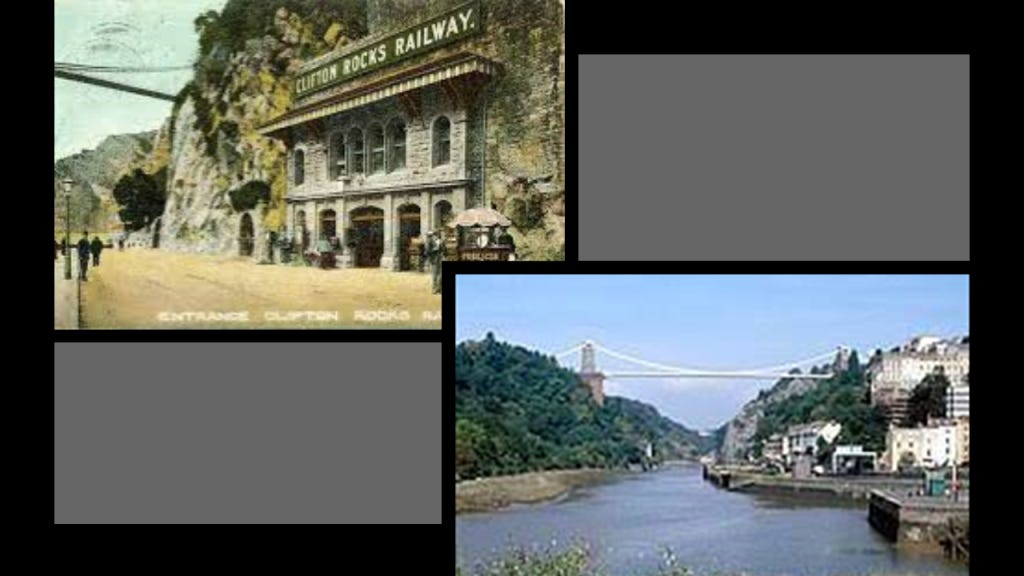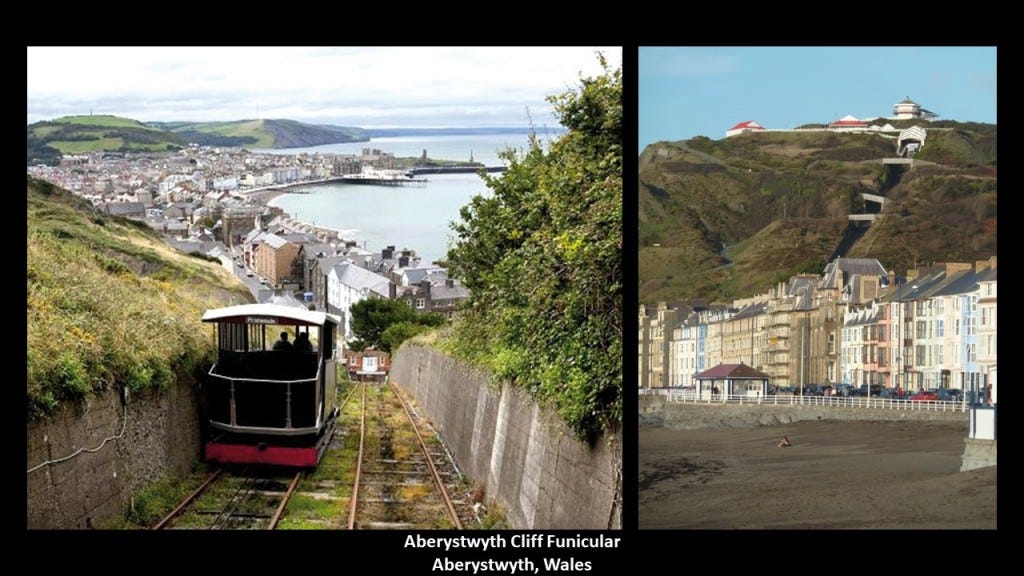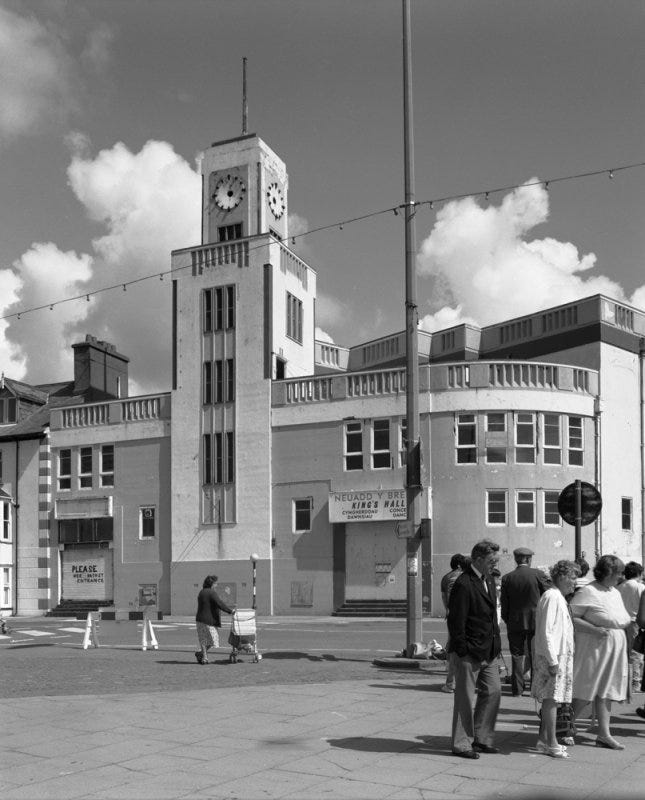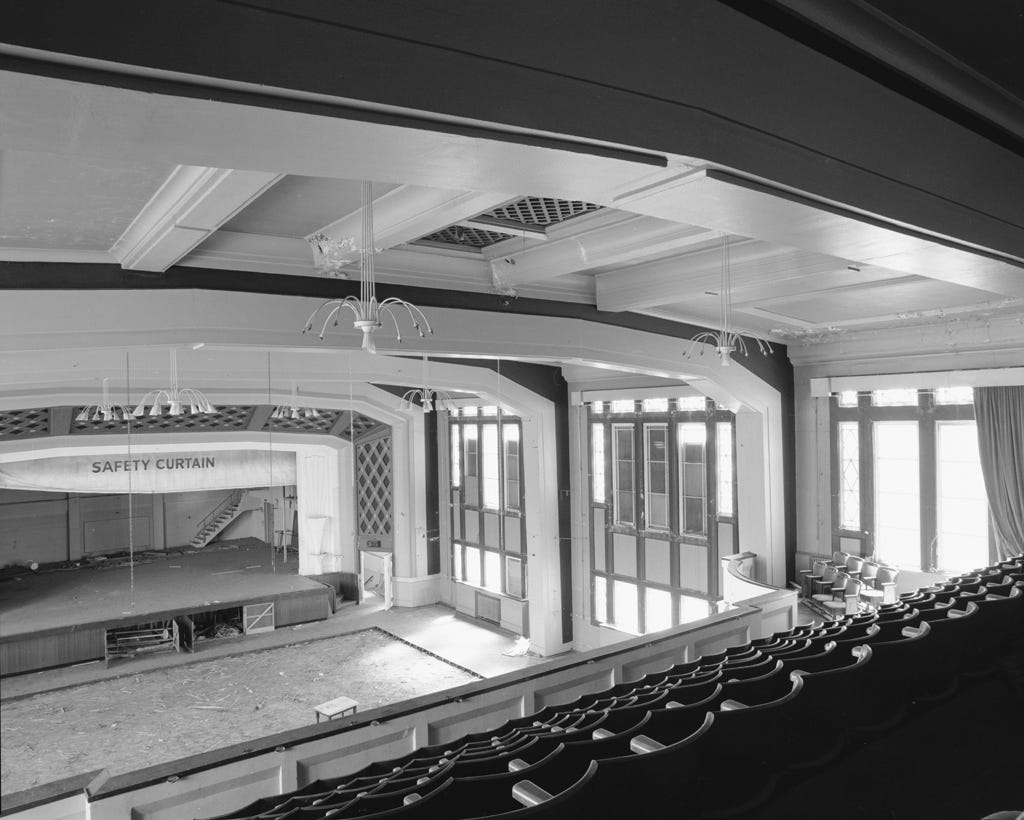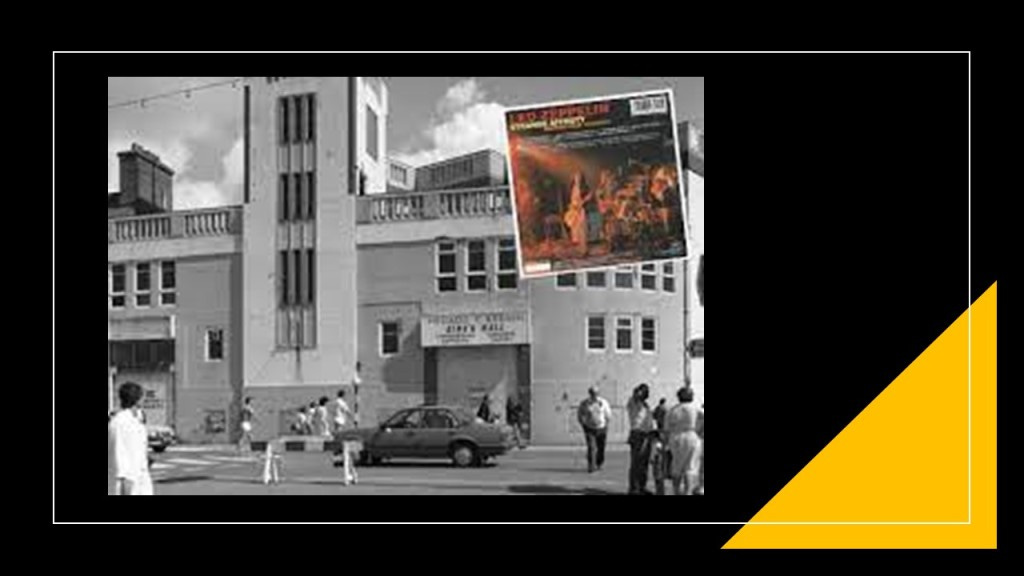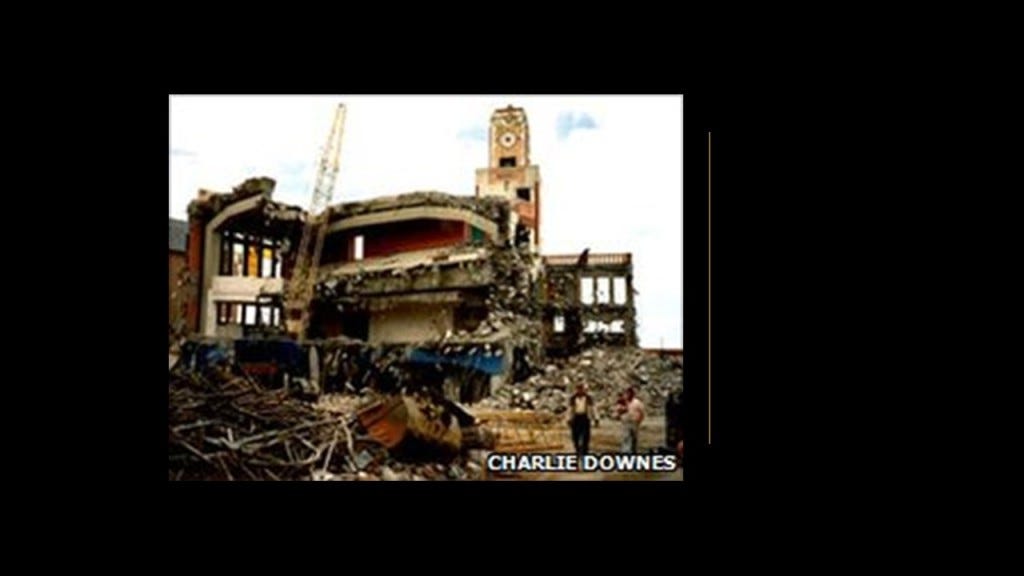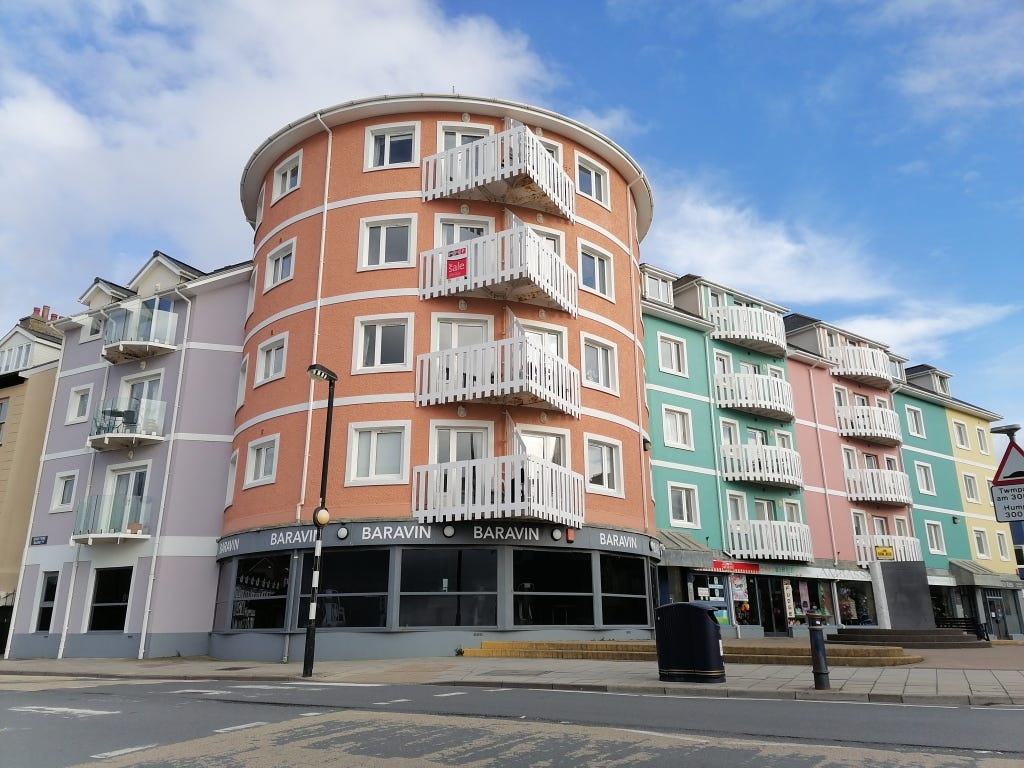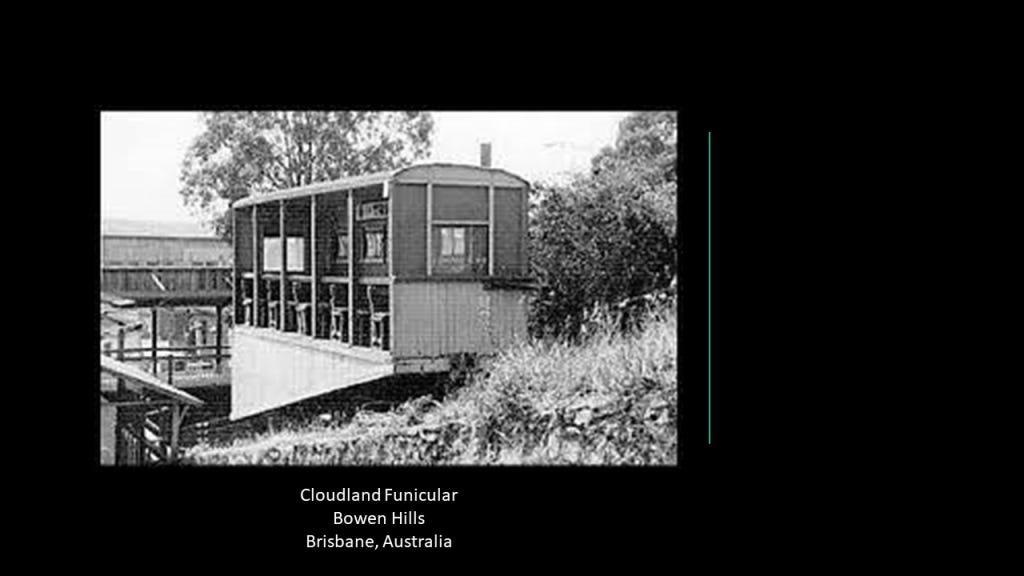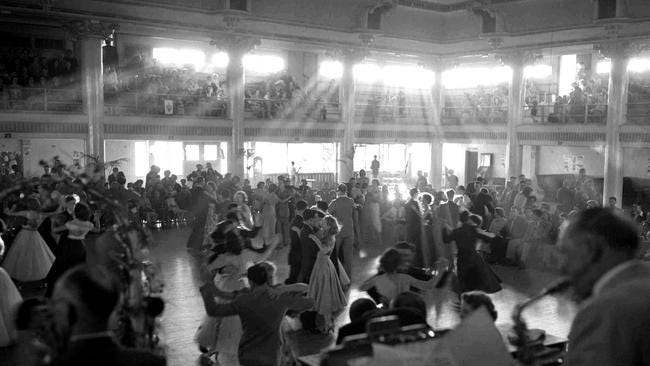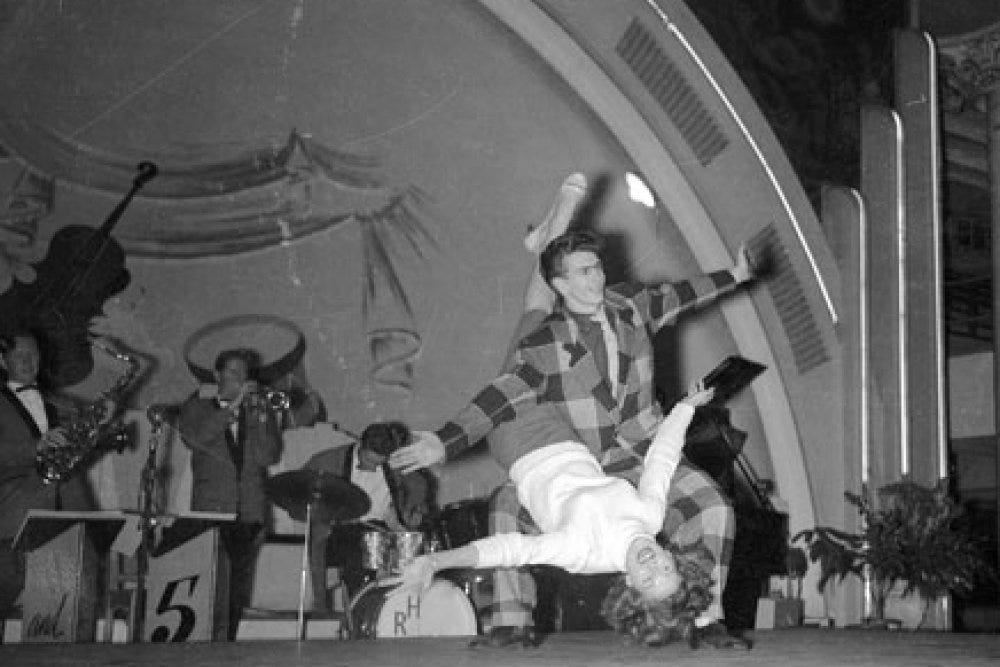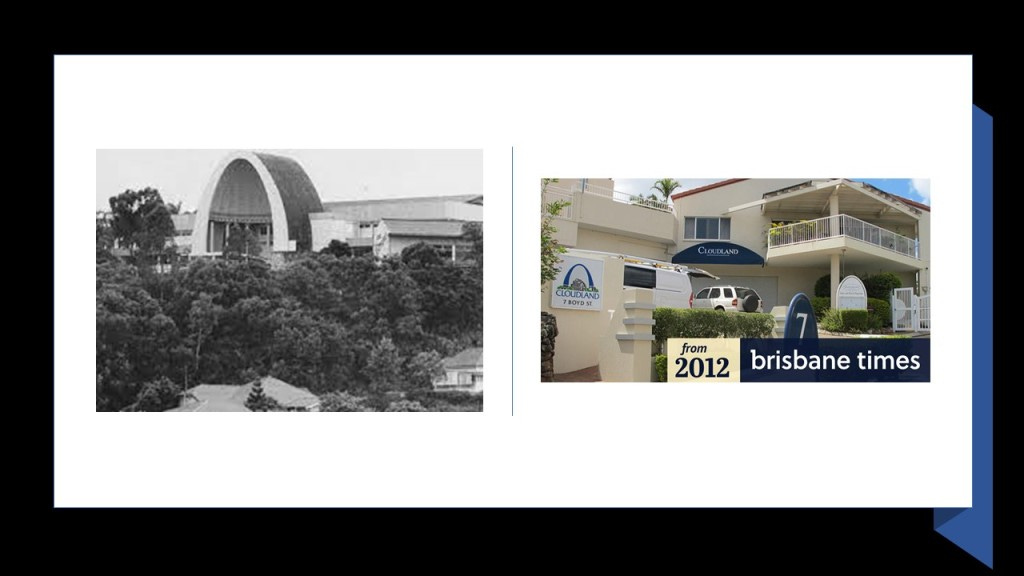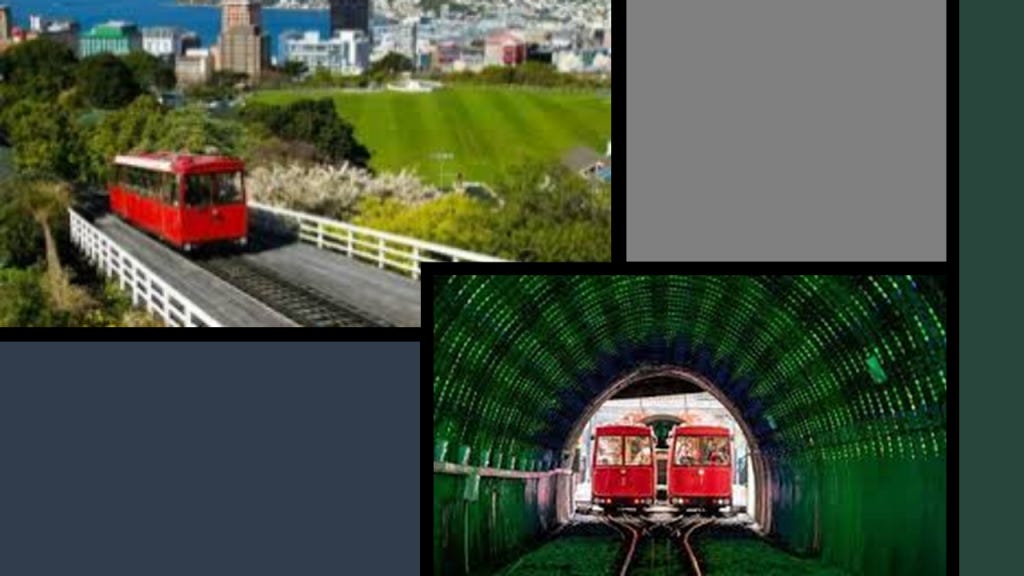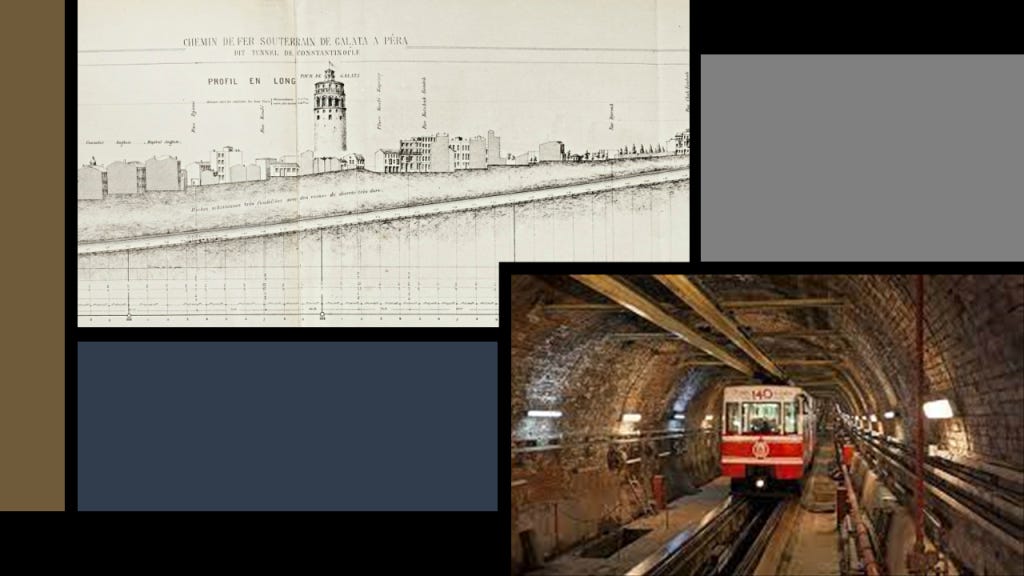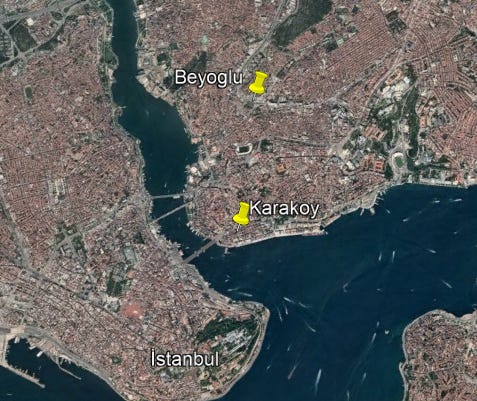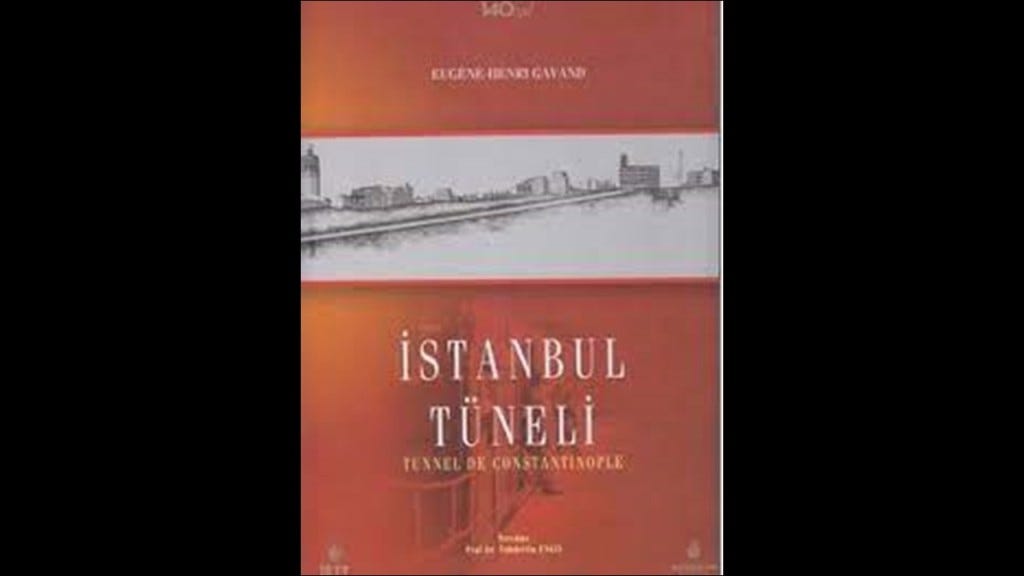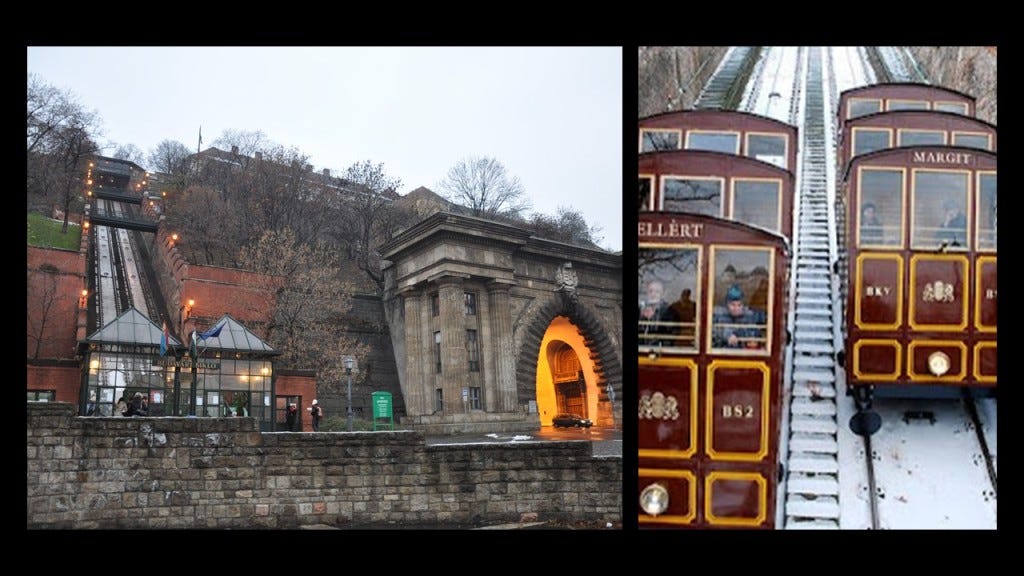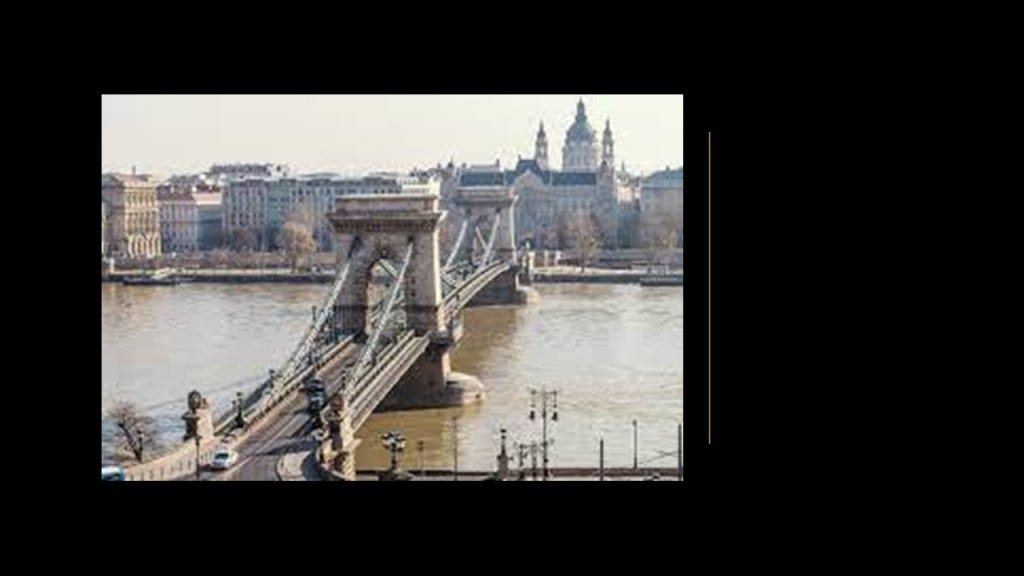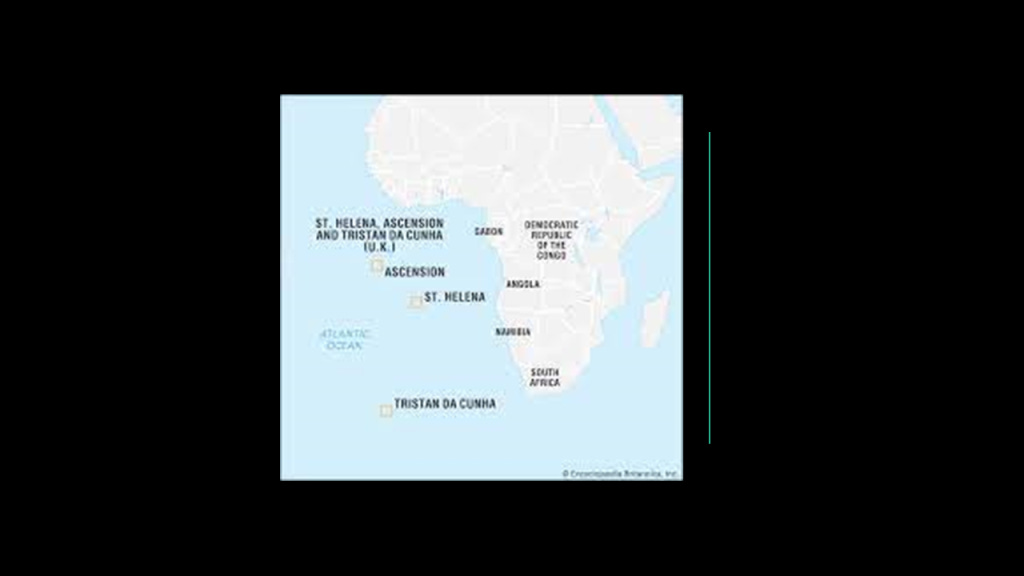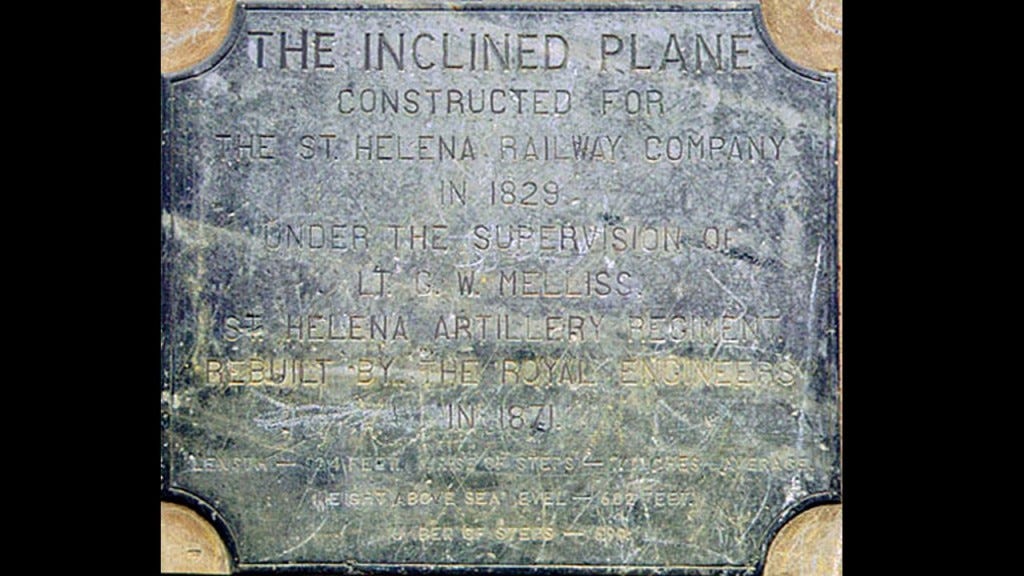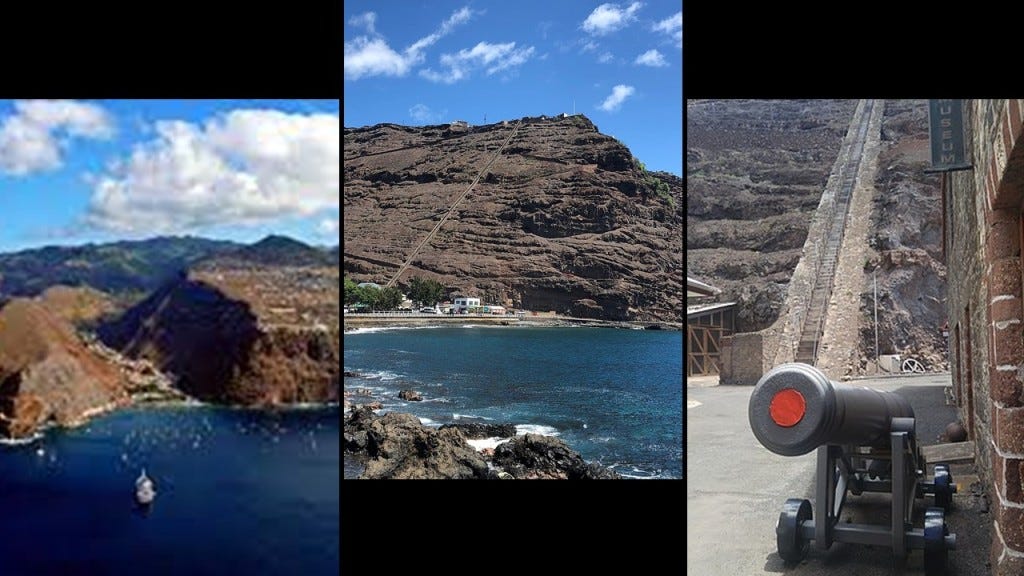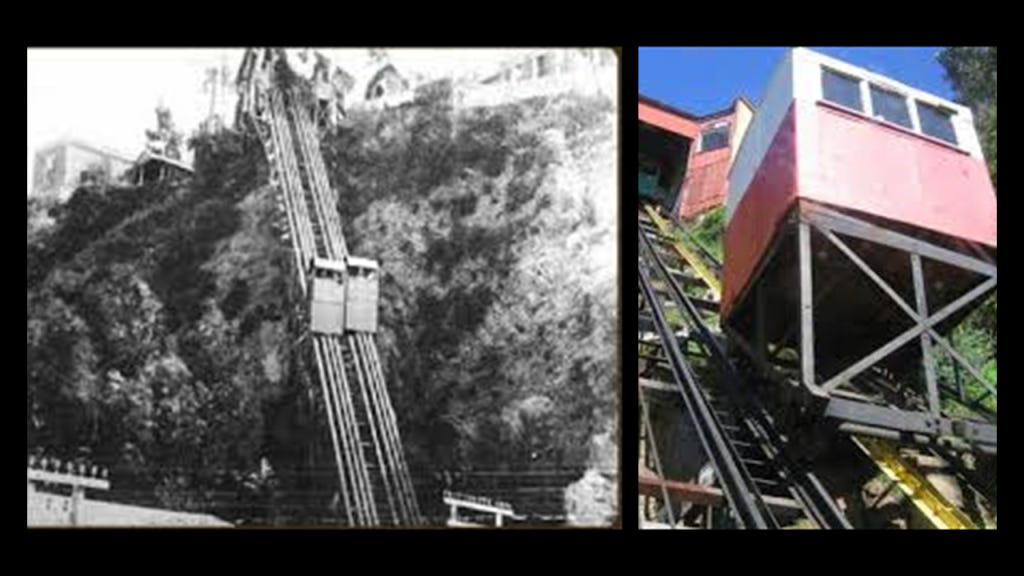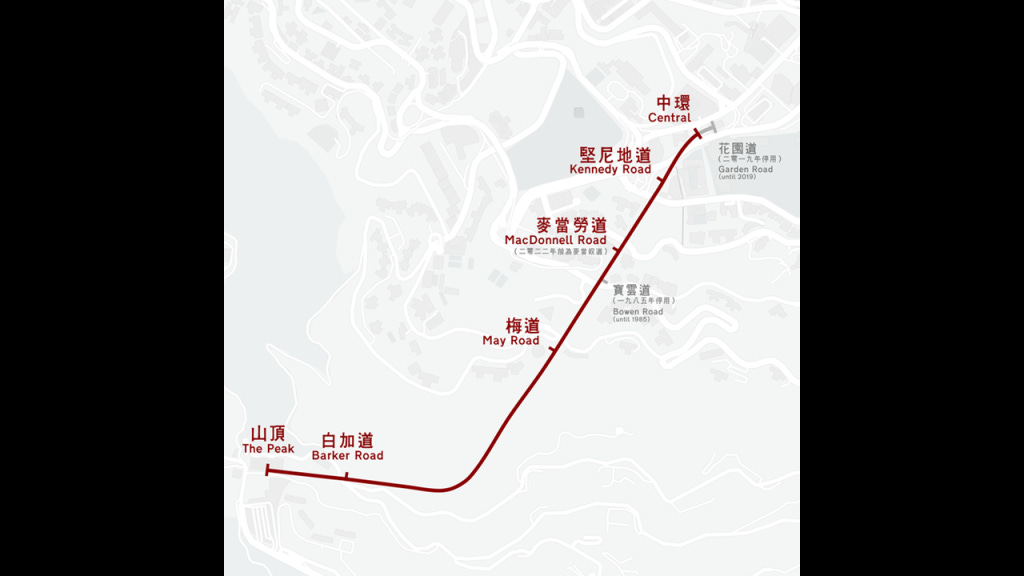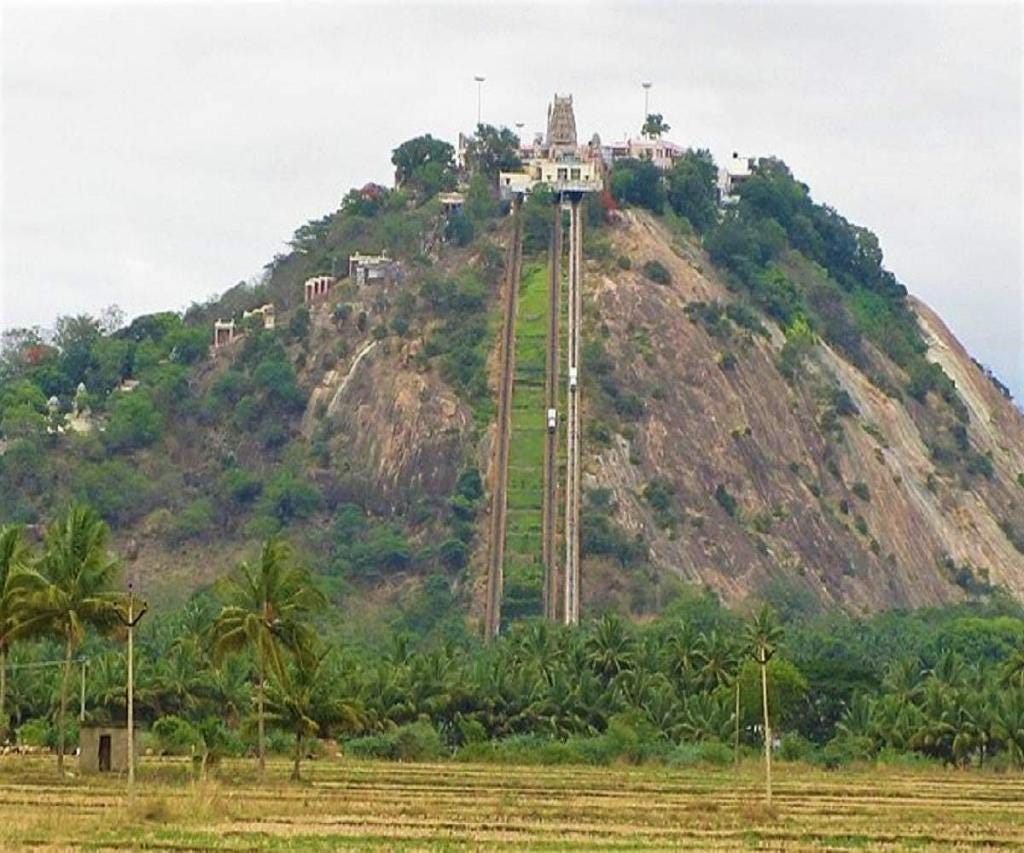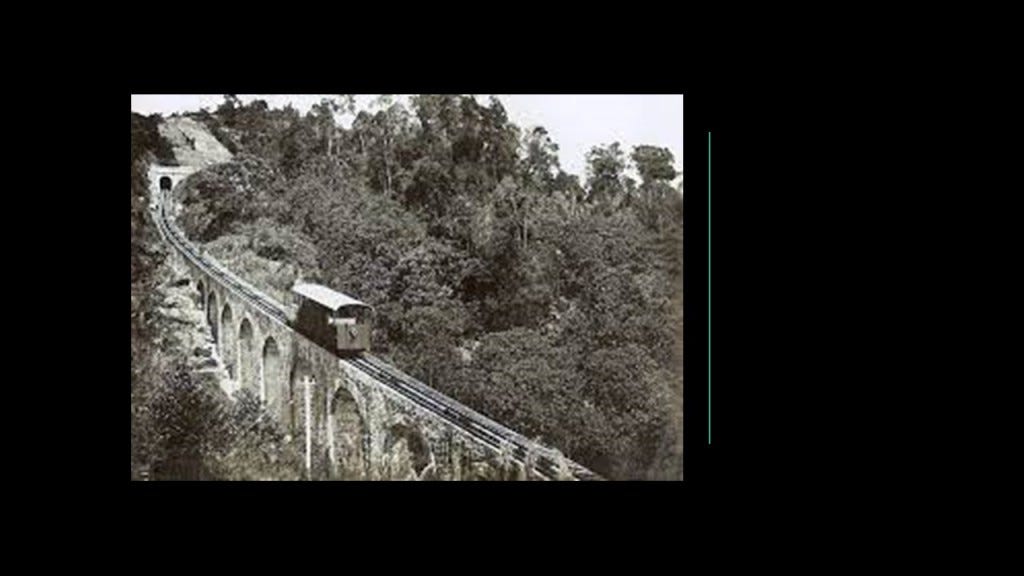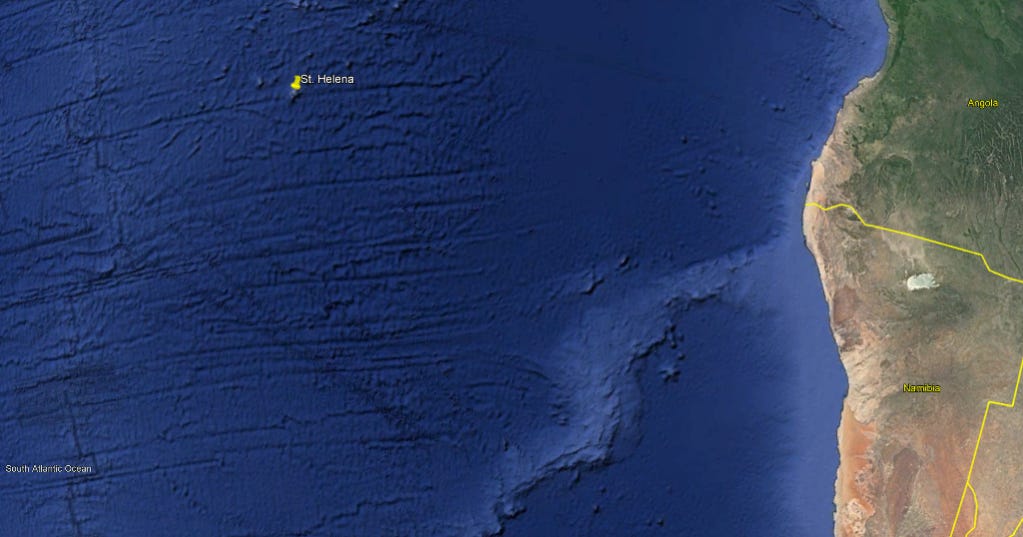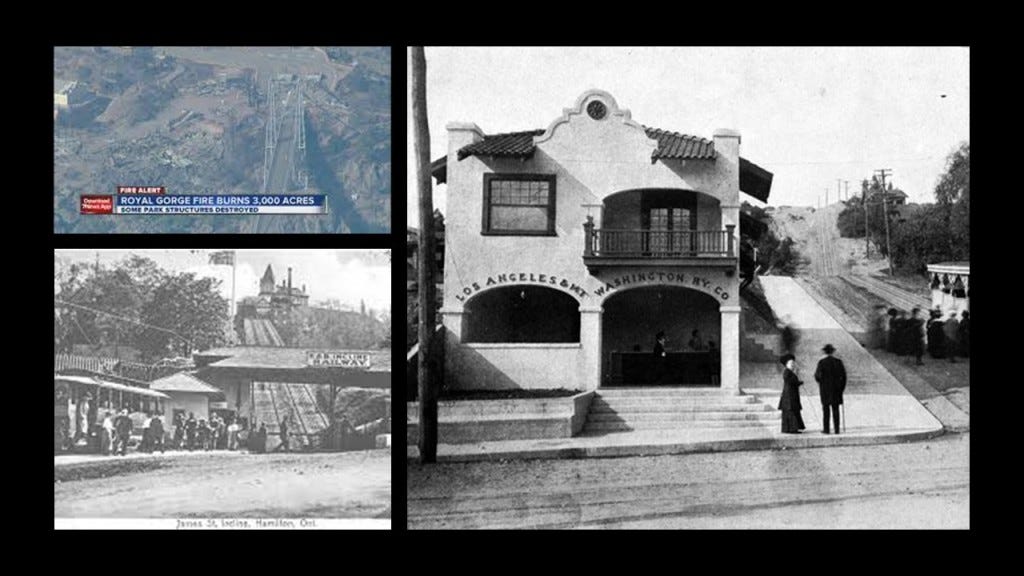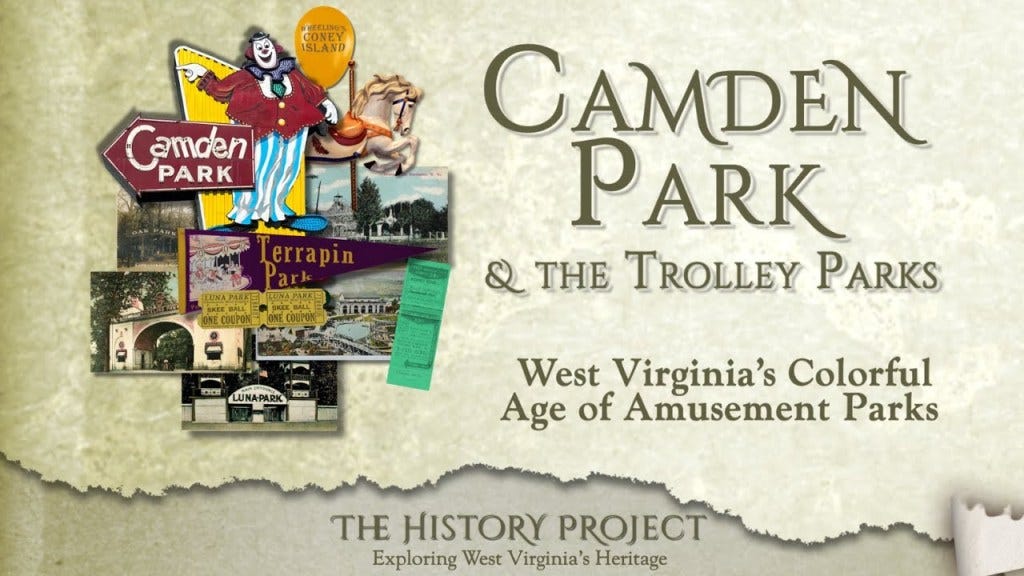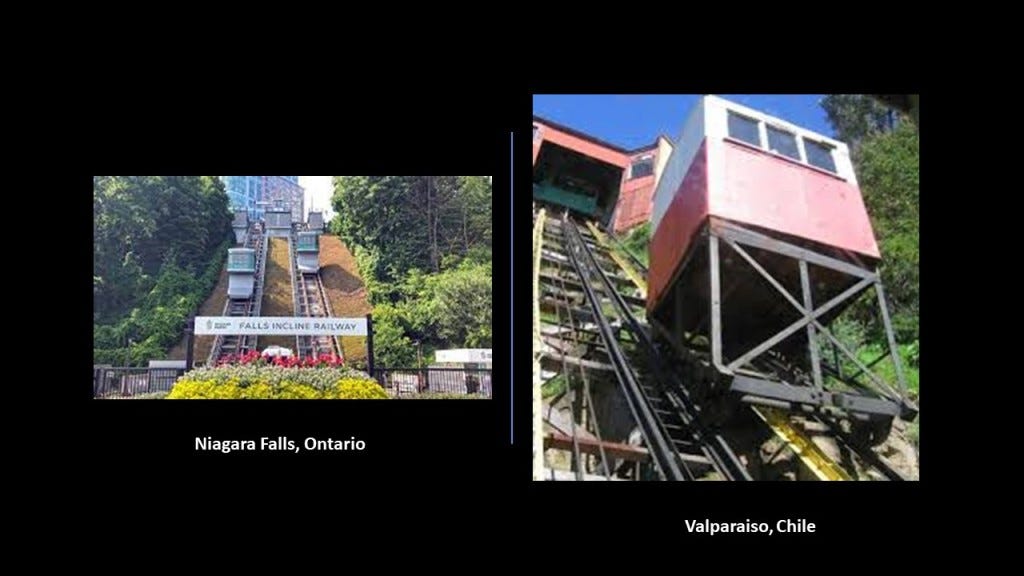Incline Railways of the Past and Present
I would like to bring your attention to the subject of Incline Railways known as funiculars in this video.
This type of incline railway works like an obliquely-angled elevator, in which cables attached to a pulley-system raise- and-lower the cars along the grade.
Two cars are paired at opposite-ends and act as each other’s counterweight. As such, there is not a need for traction between the wheels and rails, and thereby allowing them to scale steep slopes, unlike traditional rail-cars.
Thing is, there used to be a lot more of them than there are now, and incline-railways were a worldwide thing.
We are told that the first railway in America was an incline-railway built in Lewiston, New York between 1762 and 1764.
It was called Montresor’s Tramway, and said to have been designed and built by British engineers at the close of the French and Indian War (1756 – 1763) to haul goods up the steep slope at the Niagara River near the Niagara Falls escarpment at Lewiston, New York.
No longer in existence, we are told it was located where the Earl W. Brydges Artpark State Park, otherwise known as the “Artpark,” is today.
Lewiston is described as the first European settlement in western New York, established in 1720.
Lewiston lies half-way between Fort Niagara in Youngstown, New York, and Fort George in Niagara-on-the-Lake, Ontario, where the Niagara River meets Lake Ontario, and Niagara Falls, a group of three falls that straddle the international border between the United States and Canada.
Further south, Fort Erie in Ontario is located across the Niagara River from Buffalo, New York, where the river meets Lake Erie.
It is interesting to note that there is an incline railway that is still operational today at Niagara Falls in Ontario, approximately 5-miles, or 8-kilometers, south of Lewiston on the Niagara River.
The Falls Incline Railway is located next to Horseshoe Falls and links “Table Rock Center” and “Journey Behind the Falls” on the Niagara Parkway with the “Fallsview Tourist Area.”
We are told it was built for the Niagara Parks Commission by the Swiss Company Von Roll, and began operating in October of 1966.
The other historic Incline Railways of the Niagara Falls region between the United States and Canada included:
The Prospect Park Incline Railway at Prospect Park in New York, said to have been built in 1845, and completely removed in 1908 after an accident killed someone.
It was then replaced by an elevator that operated between 1910 and 1960 until it closed, and replaced by the current Prospect Point Observation Tower in 1961.
Then in 1869, the Leander Colt Incline Railway was said to have been built on the Canadian-side of the Falls, near the Whirlpool Rapids Bridge, but damaged and abandoned 20-years later in 1889.
Another Whirlpool Rapids Incline was said to have been built in 1876 near the Leander Colt Incline, but damaged by fire in 1934 and replaced by the “Great Gorge Trip” of the Niagara Belt-Line, a train route around Niagara Falls…
…which later became the “White Water Walk” where you can take a leisurely stroll where the Niagara Belt-Line once was.
Lastly, we are told the Clifton Incline was built in 1894 to serve the Canadian-side of the “Maid of the Mist” boat.
It closed in 1976 and reopened in 1977 as the “Maid of the Mist” Incline, and closed again in 1990.
Almost 30-years-later, in 2019, it was re-opened as the Hornblower Niagara Funicular, and operates today for Hornblower Niagara Cruises.
There were two historic incline railways that operated on the Niagara Escarpment in Hamilton, Ontario.
One was the Mount Hamilton Railway, also known as the Wentworth Street Incline, which started operation in 1895 and ended in 1936.
The other historic incline railway in Hamilton was the Hamilton and Barton, also known as the James Street Incline, first opened in 1892 and operated until 1932, when it was shut down for the given reason of financial losses.
As an interesting aside, compare the Niagara Escarpment on the left in appearance with the Endless Wall at New River Gorge State Park in West Virginia on the right.
Another Incline Railway still in operation today in Canada is the Old Quebec Funicular, located next to the Chateau Frontenac in Quebec City.
It first opened in 1879. In the well-over 100-years it has been operating it has been closed and renovated twice.
The first-time was when it was severely damaged by a fire in 1945, after which time it was rebuilt and reopened in 1946.
The second-time was when a cable snapped in 1996, killing a passenger, and the funicular wasn’t reopened until 1998 as an inclined elevator, since the cars are independent of each other.
In Pittsburgh, Pennsylvania, there are two remaining incline railways, out of what was originally seventeen on Mount Washington, named the Monongahela and Duquesne Inclines.
The Monongahela Incline on Mount Washington was said to have been designed by Prussian-born engineer John Endres of Cincinnati, Ohio, and started operating in 1870.
It is the oldest continuously operating funicular in the United States.
Interesting to note that 1870, the same year the Monongahela Incline became operational in Pittsburgh, was also the same year John D. Rockefeller and Henry Flagler, founded the Standard Oil Company.
The Standard Oil Company was an American oil producing, transporting, refining, marketing company…and monopoly, which exists when a specific person or enterprise is the only supplier of a particular commodity.
Were they making existing rail transportation infrastructure operational until they had the modes of transportation invented to replace them – specifically the introduction of gasoline-powered road transportation?
Let’s see more of what the historical narrative has to say about these incline railways!
The Duquesne Incline was said to have been designed by Hungarian-American civil engineer Samuel Diescher.
Completed in 1877, the Duquesne Incline rises 800-feet, or 244-meters, at a 30-degree angle up Mt. Washington.
It was closed in need of repairs in 1962, but reopened the next year after local residents raised funds to restore it, and it has been completely refurbished since then and is one of Pittsburgh’s most popular tourist attractions.
Oh yeah, before we leave Pittsburgh, Pennsylvania, at the Forks of the Ohio River for Cincinnati, Ohio, on the Ohio River, it is also interesting to note that the petroleum industry in the United States began in earnest in 1859 when Edwin Drake found oil on a piece of leased-land near Titusville, Pennsylvania, in what is now called Oil Creek State Park.
For this reason, Titusville is called the Birthplace of the Oil Industry, and for a number of years this part of Pennsylvania was the leading oil-producing region in the world.
Cincinnati had five historic incline railways.
Mount Auburn was Cincinnati’s first incline railway, which started operating in 1872.
In 1889, there was a terrible accident where a malfunction caused the car to careen down the track with 7 people in it, causing death and destruction along the way.
It was remodelled, opening again in 1890, and only operated for another 8-years. Control of it passed into the consolidated system, and it was demolished and abandoned.
Public stairs, known as the Main Street steps, replaced the Mount Auburn Incline.
In 1875, the Price Hill Incline was the next to open in Cincinnati.
It was the steepest, and shortest, of the five, and carried passengers and freight.
It was privately-owned by the Price family, and carried passengers to the Price Hill House at the top, a restaurant and entertainment venue.
The incline stopped operating in 1942.
This is where the Price Hill Incline was located.
Cincinnati’s third incline to open was the one on Mount Adams, the longest-running of the five, operating from 1876 until 1948.
The incline of 945-feet, or 288-meters, took 2 minutes and 20-seconds to go from the bottom to the top.
For almost twenty-years, from 1876 to 1895, the Highland House at the top of the incline was a destination for food and entertainment.
This was the former location of the Mount Adams Incline.
Opening the same year as the Mount Adams Incline, the Bellevue Incline, also known as the Elm Street Incline and the Clifton Inclined Plane, started operating in 1876.
It was 1,000-feet, or 305-meters ,- long and the highest in elevation of the five inclines.
The Bellevue Incline ran between the Jackson Brewery and McMicken Hall, the University of Cincinnati’s first college.
The Bellevue House opened the same year as the incline, and served Moerlein beer, and had entertainment like music and bowling.
Bellevue House unfortunately burned down in 1901 and the Incline closed 25-years later.
The fifth and last incline railway was said to have been constructed in Cincinnati in 1892.
It had no entertainment house at the top to draw passengers.
It closed in 1923, the second of the five to close-down.
Moving west across the country to look at some of the historic incline railways there, in Duluth, Minnesota, the Highland Park Tramway Line served Duluth Heights via an Incline-Railway from 1892 to 1939, which was the last piece of the electric streetcar system to be dismantled, as the rest started going away in the early 1930s.
In Iowa, the Fenelon Place Cable Car is found in Dubuque’s Cathedral Historic District, and is described as the world’s steepest, shortest scenic railway, said to have been built in 1882 for the private-use of J. K. Graves, a local banker and State Senator.
It is still in operation today.
There was an historic Incline Railway at the Royal Gorge in Canon City, Colorado.
George Cole of the Royal Gorge Bridge and Amusement Company was given credit for the design and supervision construction first of the Royal Gorge Bridge, at the time World’s Highest Suspension Bridge, composed of 2,100 strands of wire that are anchored in granite walls and suspended from four towers rising 75-feet, or 23-meters, above the roadway.
It was said to have been constructed between June and November of 1929 (which would have been the year the Great Depression began).
The bridge is contained within the Royal Gorge Bridge and Park, a theme park on the edge of the gorge around both ends of the bridge, which itself was said to have been built as a park attraction and not for actual use for road transportation.
George Cole was then credited with the construction of the world’s steepest incline railway in 1931 to transport passengers from the canyon rim to its floor and back.
A wildfire in 2013 damaged the Incline Railway as well as most of the park’s buildings and aerial tram.
The park was rebuilt and reopened in 2015, but the Incline Railway was among the attractions not restored as it was destroyed beyond repair.
Like the historic railroad that once-traversed the Niagara Gorge in New York and Ontario, there is a rail-line running through the Royal Gorge in Colorado, only this one is still in operation today, year-road, between Canon City and Parkdale, Colorado.
In California, I found several historic incline railways, one of which is still in operation and others are not.
Angels Flight on Bunker Hill in Los Angeles, which first operated from 1901 until 1969, is still in operation today.
We are told that it was moved a half-block south from its original location when it reopened as a tourist attraction in 1996, and has run almost continuously since then, with a few exceptions, like closing for nine-years following a fatal accident.
Angels Flight has a decidedly Moorish-looking appearance….
Court Flight also on Bunker Hill opened in 1905 and ascended 200-feet, or 61-meters, at a grade of 43-degrees. It functioned for only 39-years, closing in 1943 we are told because of low-profitability during World War II.
The Los Angeles and Mount Washington Incline Railway in Los Angeles opened in 1909.
Passengers could ride the incline railway to the top for 5-cents, and they could visit Mount Washington Hotel at the top, a grand hotel.
Alas, less than only 10-years after it opened, city inspectors determined that the railway was unsafe due to a worn cable and subsequently shut it down in 1918.
The Grand Hotel at the top of Mount Washington became the International Headquarters for Paramahansa Yogananda’s Self-Realization Fellowship in 1920.
The Santa Catalina Incline Railway on the privately-owned by that time Santa Catalina Island climbed above the Avalon Amphitheater starting in 1905 as a tourist attraction, until its closure after a fire in that devastated Avalon in 1918.
Moving on to incline railways, AKA funiculars, around the world, here are more examples.
In the United Kingdom, there is history of at least 40 of them that I can find a reference to. Though quite a few of these funiculars are still in operation today, quite a few are not.
There is the water-powered Lynton and Lynmouth Cliff Railway in North Devon, which is the highest and steepest water-powered funicular in the world, at 862-feet, or 263-meters, -long, said to have been built between 1887 and its opening in 1890.
The Clifton Rocks Railway in Bristol, England, was an underground funicular railway that first opened in March of 1893 and closed in October of 1934, and funded by George Newnes, a publisher and proprietor of the Lynton and Lynmouth Cliff Railway.
Like what we saw in Niagara Falls region with the historic funiculars at the Niagara Gorge near the Whirlpool Rapids Bridge between New York and Ontario, and in Colorado with the Royal Gorge Bridge and Incline Railway, the Clifton Rocks Railway upper station was near the Clifton Suspension bridge, and it linked to Hotwells and Bristol Harbor at the bottom of another gorge, the Avon Gorge.
The existence of the Clifton Suspension Bridge was credited to the famous prolific British civil and mechanical engineer, Isambard Kingdom Brunel, called “one of the 19th-century engineering giants.”
The Aberystwyth Cliff Railway in Aberystwyth, Wales, is the longest electric funicular in the British Isles, at 778-feet, or 237-meters-long, and the second-longest after the Lynton and Lynmouth Cliff Railway.
It first opened in August of 1896, and is still in operation today.
Kings Hall was at the top of the Aberystwyth Cliff Funicular and was a favored entertainment venue there for concerts and dances.
It had a great dance floor, and said to have been built in the Art Deco Architecture style in 1934 (which would have been between World War I and World War II).
Major band concerts were also held there, like Led Zeppelin in January of 1973 during their Strange Affinity British Tour in 1972 and 1973.
The King’s Hall was demolished in 1989, for the given reason of apparent structural weaknesses and disrepair…
…and it was replaced where it stood on the corner of Marine Terrace and Terrace Road by the King’s Hall residential flats and commercial units.
In Australia, the Cloudland Funicular ran from the Main Road straight up to the Cloudland Dance Hall in the Bowen Hills suburb of Brisbane.
The funicular was demolished in 1967.
The Cloudland Dance Hall, also known as Luna Park, was a huge thing during the 40’s when the US troops were stationed there.
Like Kings Hall in Aberystwyth, Wales, the Cloudland had a great dance floor.
Also like Kings Hall in Wales, it was demolished in the 1980s, and the Cloudland Apartments occupy the former location of this iconic landmark.
In New Zealand, the Wellington Cable Car funicular is still operational today, and first started operating in 1902.
It connects the shopping district of Lambton Quay with the suburb of Kelburn.
The line consists of a single track with a passing loop in the middle for the two cars.
The Tunel Funicular in Istanbul, Turkey, first opened in 1875, and is the second-oldest fully-underground urban railway in the world after the London Underground, which opened in 1863.
The Tunel also has a single-track with a passing loop for the two cars.
It connects the quarters of Karakoy, the modern name for the old part of the city originally known as Galata and Beyoglu, originally known as Pera.
The Tunel’s existence was credited to French engineer Eugene-Henri Gavand, who in 1867 visited Istanbul, which was then Constantinople, as a tourist, and came up with the idea of designing a funicular to help all the people who were struggling to get up-and-down the steep Yuksek Kaldirim Avenue.
It was said to have been constructed between July of 1871 and December of 1874, and officially opened in January of 1875.
I can’t find anything about Eugene-Henri Gavand except for this book attributed to him about the Tunel.
The Buda Castle Hill Funicular in Budapest, Hungary, first opened in March of 1870, the same year as the Monogahela Incline in Pittsburgh and the founding of Standard Oil, and around the same time that the construction of the Tunel in Constantinople that we are told was starting in 1871.
Part of the destruction of the Buda Castle complex during World War II, it reopened in June of 1986.
The funicular links Adam Clark Square and the Szchenyi Chain Bridge at street-level to the Buda Castle above, the palace complex of the Hungarian Kings.
The Szchenyi Chain Bridge was said to have been designed by English engineer William Tierney Clark, and built by Scottish engineer Adam Clark starting in 1840 and opening in 1849, and that it was the first permanent bridge to cross the Danube River in Hungary.
At the time of its construction, it was considered one of the modern world’s engineering wonders.
As I mentioned previously, these incline railways known as funiculars were a worldwide thing.
Other historic and present-day locations include:
Jacob’s Ladder on the island of St. Helena in the South Atlantic Ocean.
A two-car inclined railway to carry cargo between Jamestown and the Fort was said to have been constructed in 1829 .
The power supply for the incline railway was a team of three-donkeys that rotated around a capstan connected to the cars by iron chain and pulleys.
Then in 1871, termite damage to the wooden ties of the railway led to the Royal Engineers to removing the cars, rails and associated machinery of the inclined railway.
Today, what became known as Jacob’s Ladder is a staircase leading from Jamestown, the capital city of St. Helena, up to Ladder Hill Fort and the suburb of Half Tree Hollow.
In Valparaiso, Chile, the oldest of the incline railways known as the Ascensor Concepcion, is still in operation today.
It first opened in 1883 to transport passengers from Elias Alley on the Plan de Concepcion, or the flat part of the city where public and commercial buildings are found, to the Gervasoni Promenade on Concepcion Hill.
The total railway length is 226-feet, or 60-meters, and it climbs 154-feet, or 47-meters, above sea-level at a 46-degree angle.
In Hong Kong, the Peak Tram started operating in May of 1888, and was said to be the first funicular in Asia.
Now owned and operated by Hongkong and Shanghai Hotels (HSH), it runs from Garden Road Admiralty to Victoria Peak, covering a distance of .87-miles, or 1.4-kilometers.
It is a single-track-line with a passing loop, and two curves, one at the bottom and one at the top.
There are many more examples to choose from, but here’s a couple more to leave you with before I end this post.
In India, there is an incline railway known as the “winch train” to get up to the Murugan Temple in Palani in southern India’s Tamil Nadu State.
It was said to have been first commissioned in 1966 originally to help get the elderly, sick and handicapped people to the temple at the top of the hill.
And lastly, the Penang Hill Railway that climbs Penang Hill outside of George Town in Malaysia’s Penang State.
It is a single-track railway with a passing loop that passes through a tunnel that is the steepest in the world.
The construction of the Penang Hill Railway was said to have started in 1909 and officially opened on January 1st of 1924.
The given reason for it having initially been constructed was for the British colonial community to enjoy the cooler air of Penang Hill.
As you can see from the examples provided in this video, there used to be a lot more of these inclined railways than there are now, and they were all over the world, including one on Saint Helena, a small island in the South Atlantic Ocean off the coast of Africa.
Of the Incline Railways no longer in existence, they were typically either deemed no longer profitable, unsafe, or destroyed by fire.
The same is true for historic trolley parks, most of which are long gone due primarily to fire, though a few amusement parks remain in their original locations, but without the trolley, like Camden Park in Huntingdon, West Virginia.
Of this type of incline railway still in operation today, they either operate as part of the tourist industry, or are still operating as part of the public transportation system.
It certainly appears as if those behind the reset of history didn’t want to keep any of the highly-advanced rail infrastructure found around the world that was problematic in our historical narrative unless they could profit from it or it made practical sense from a public transport sense to keep it in place.
Something to think about when trying to piece together what has taken place here without our knowledge or consent.




